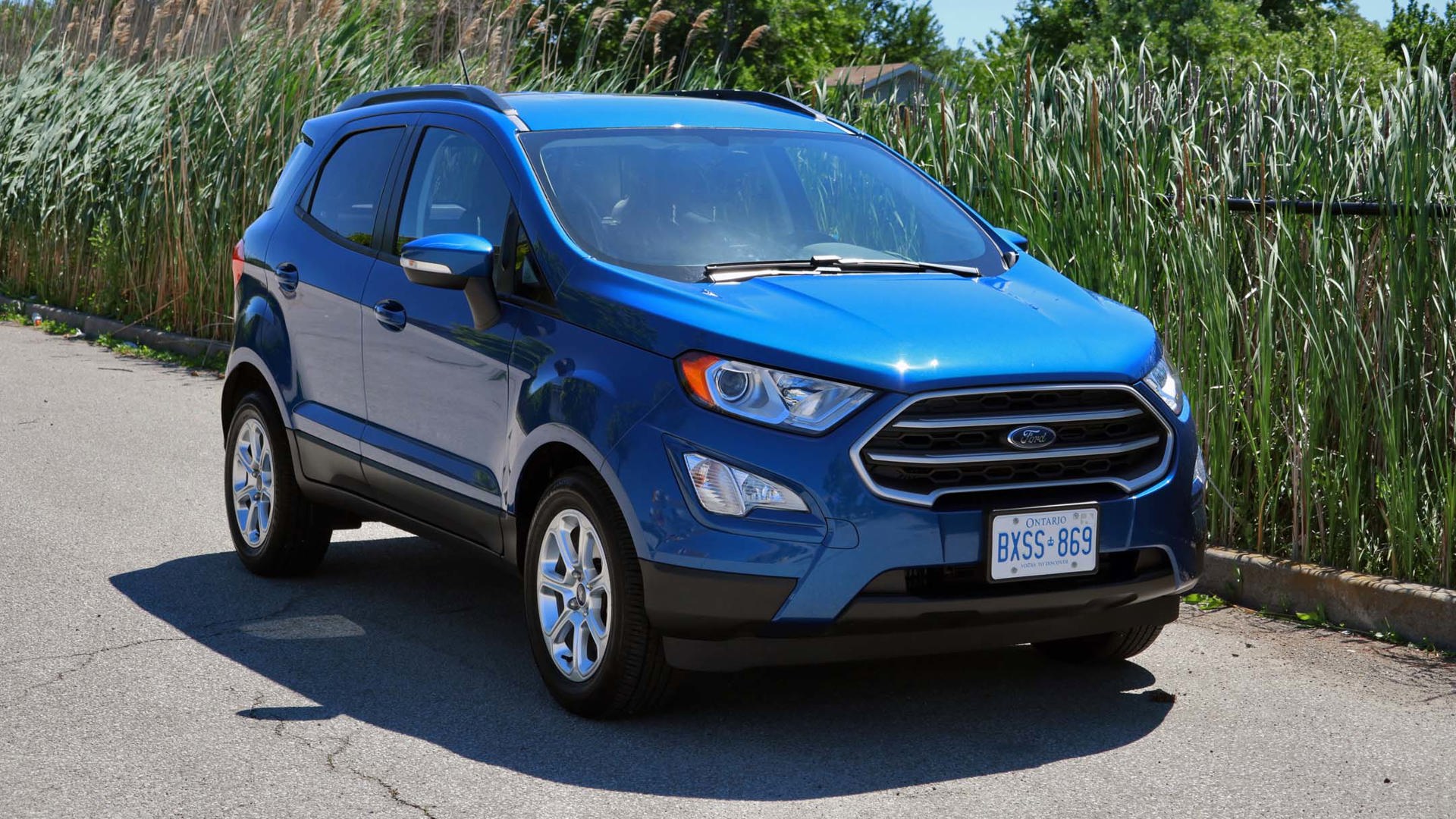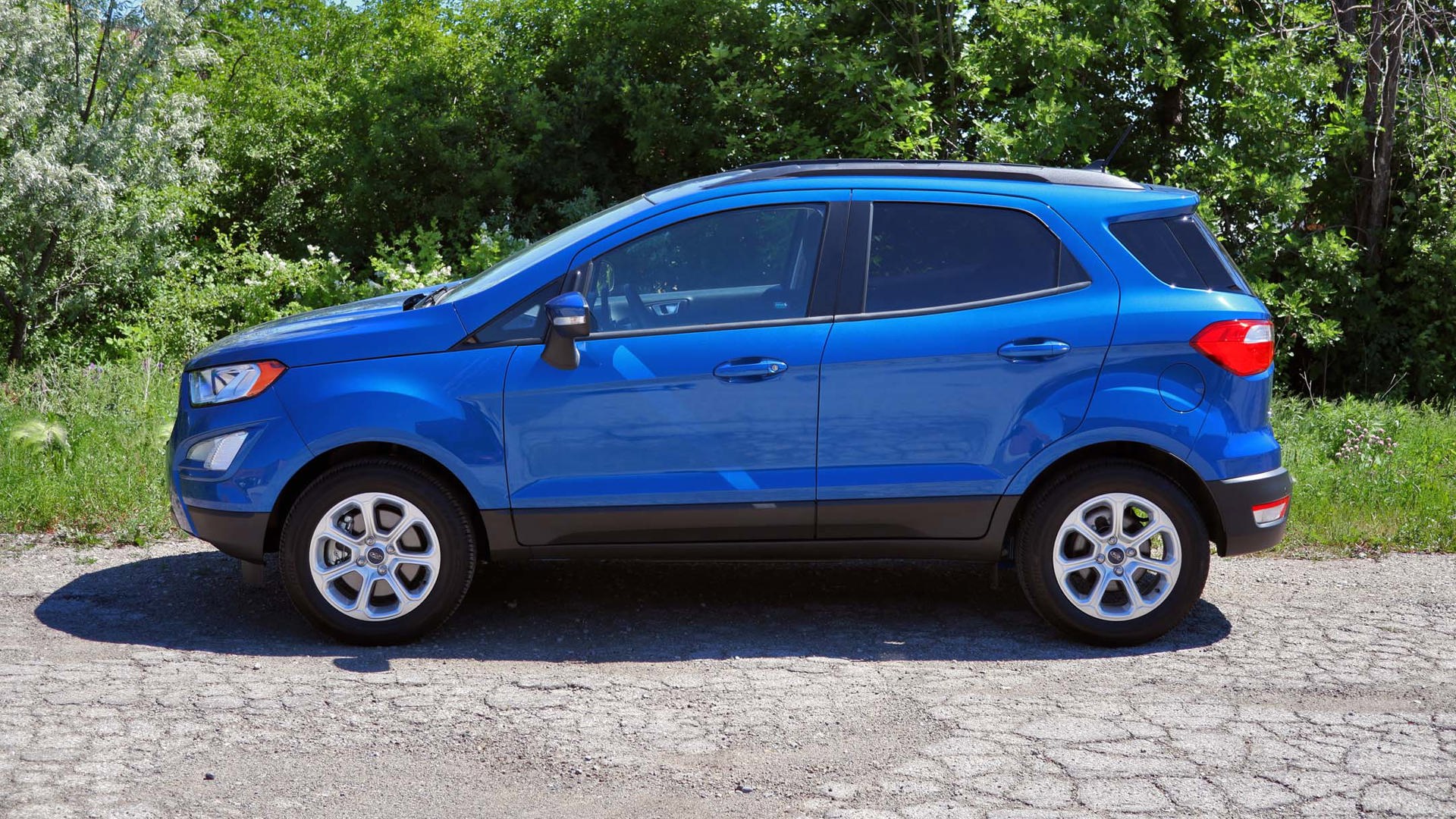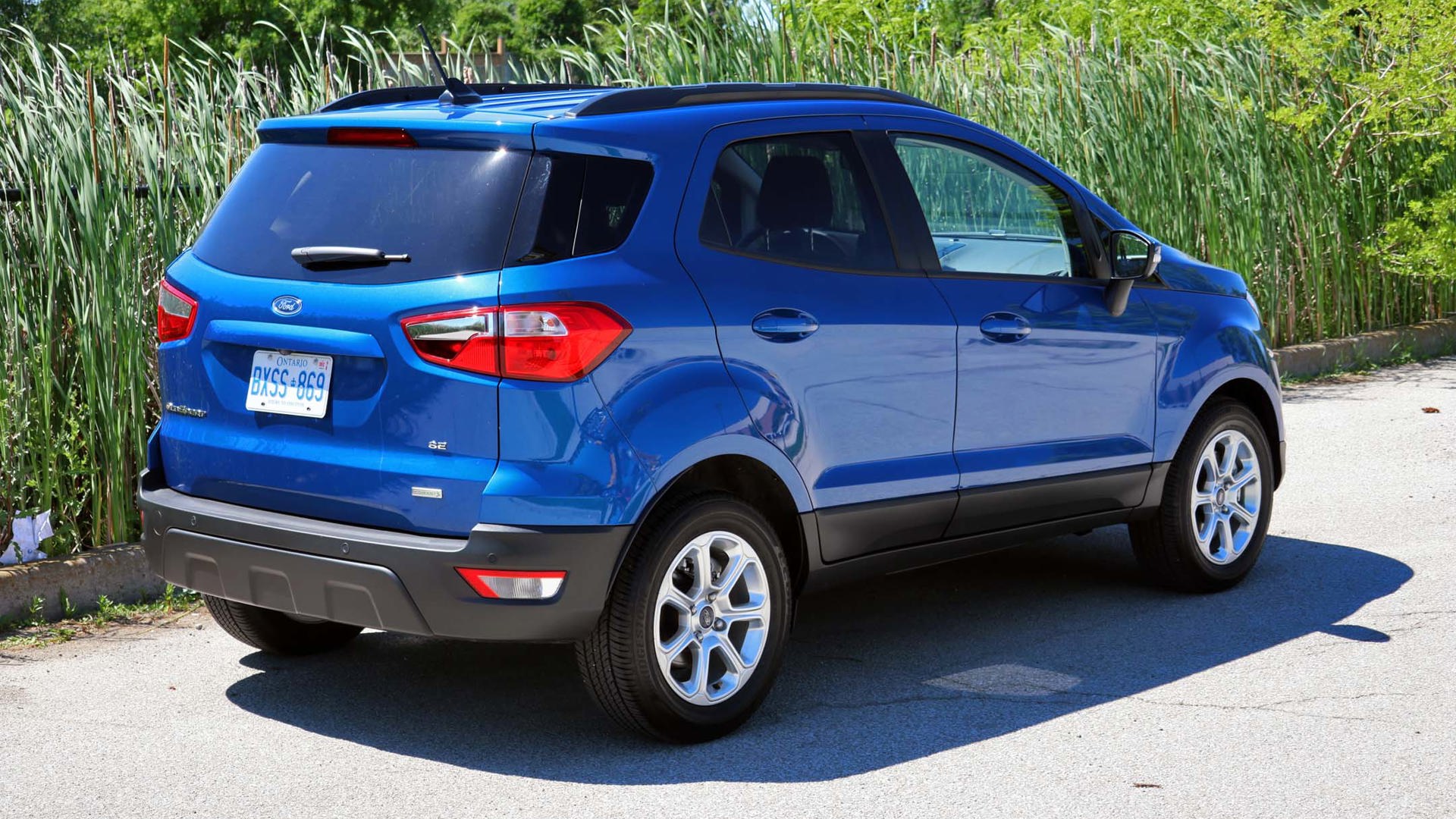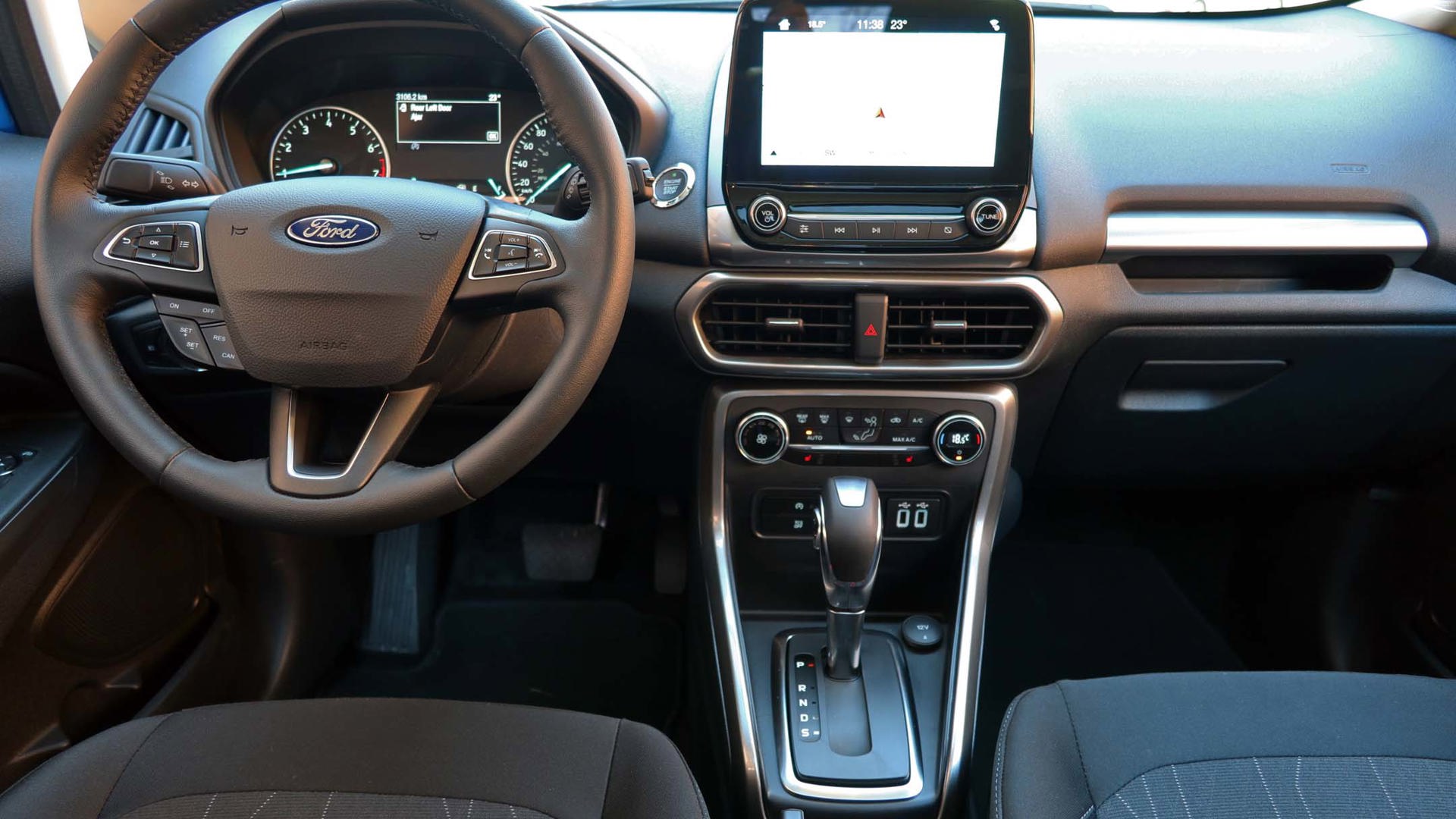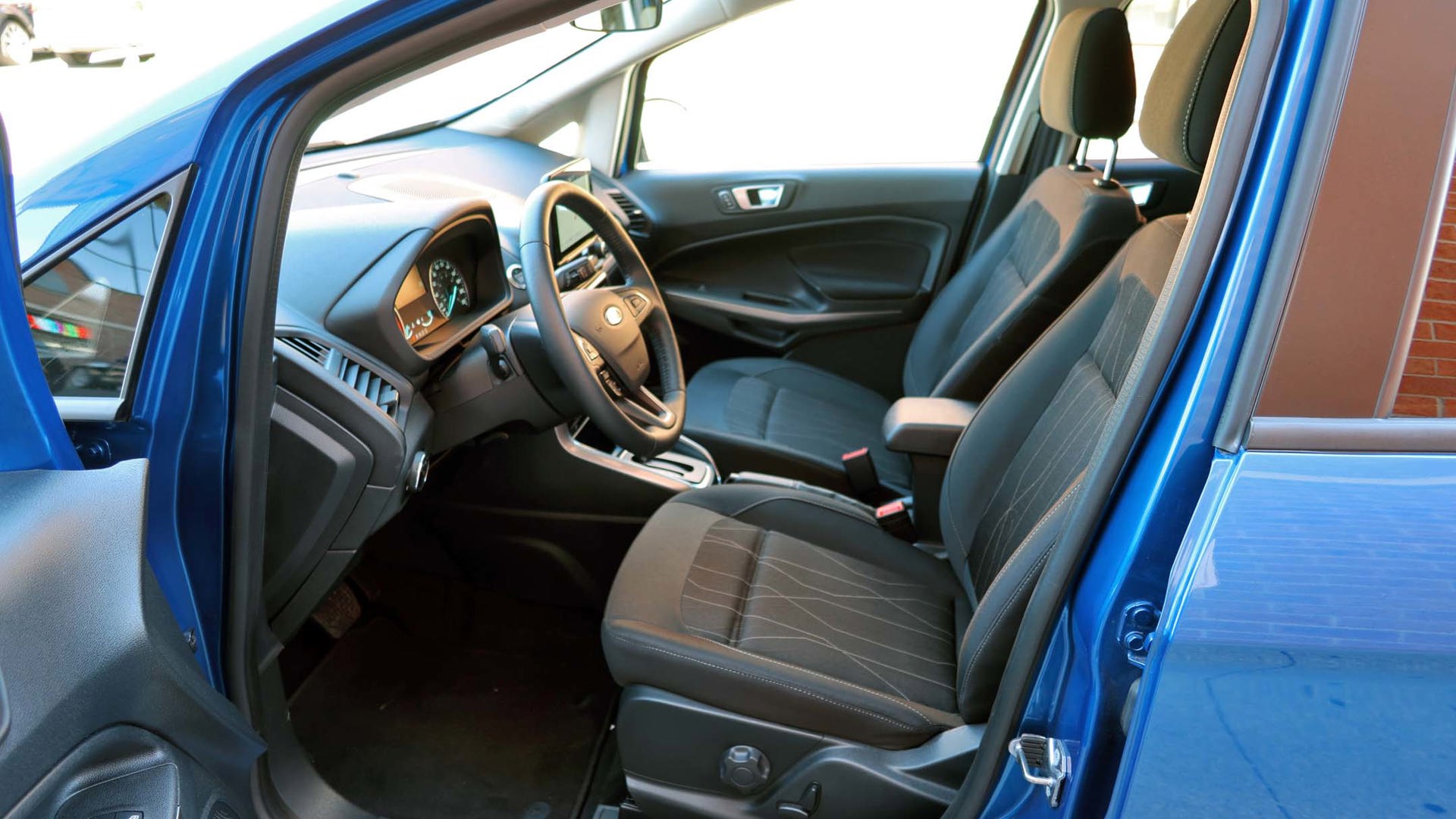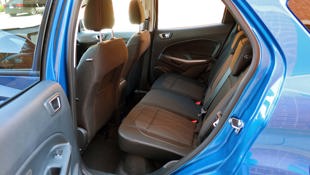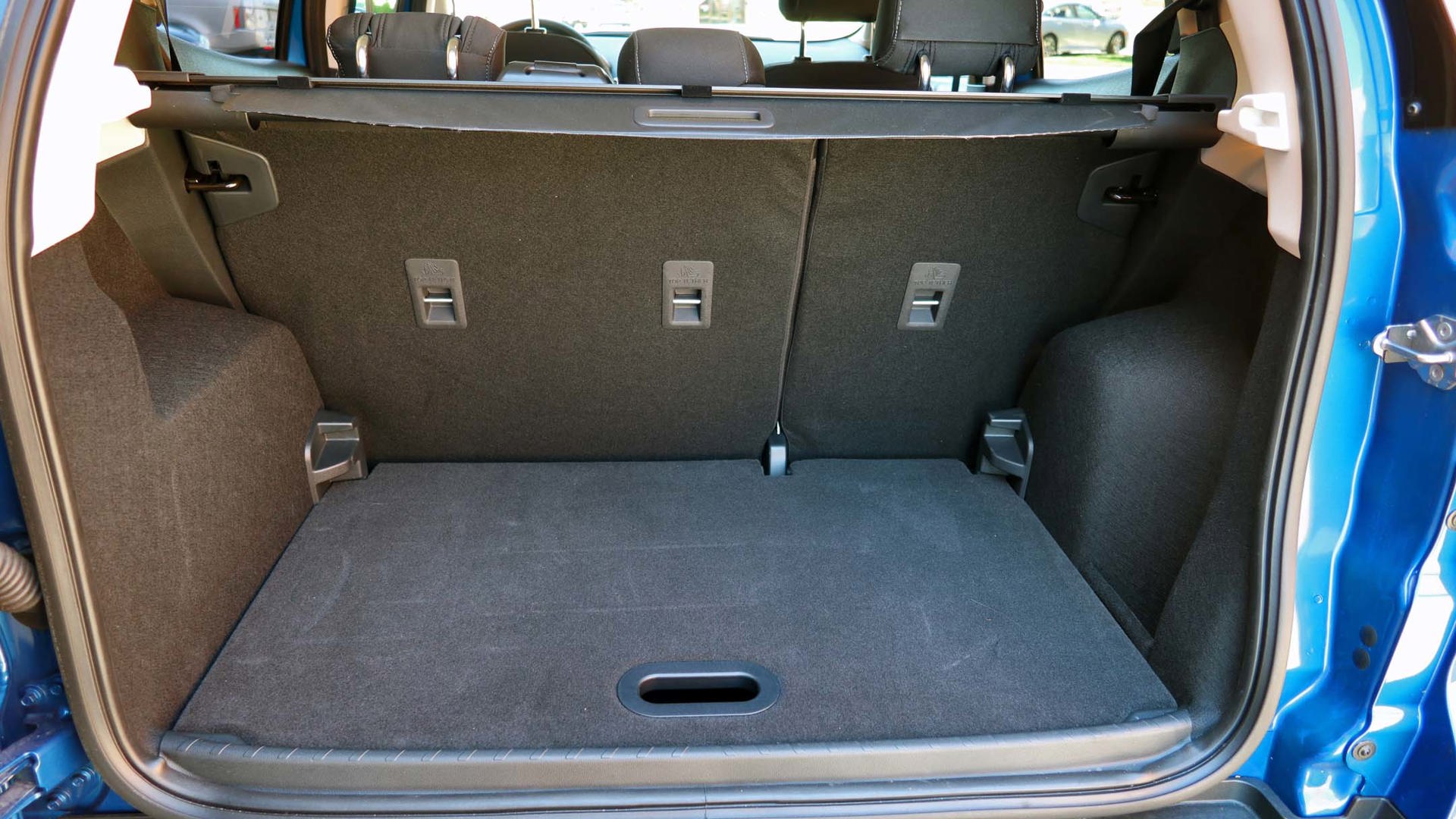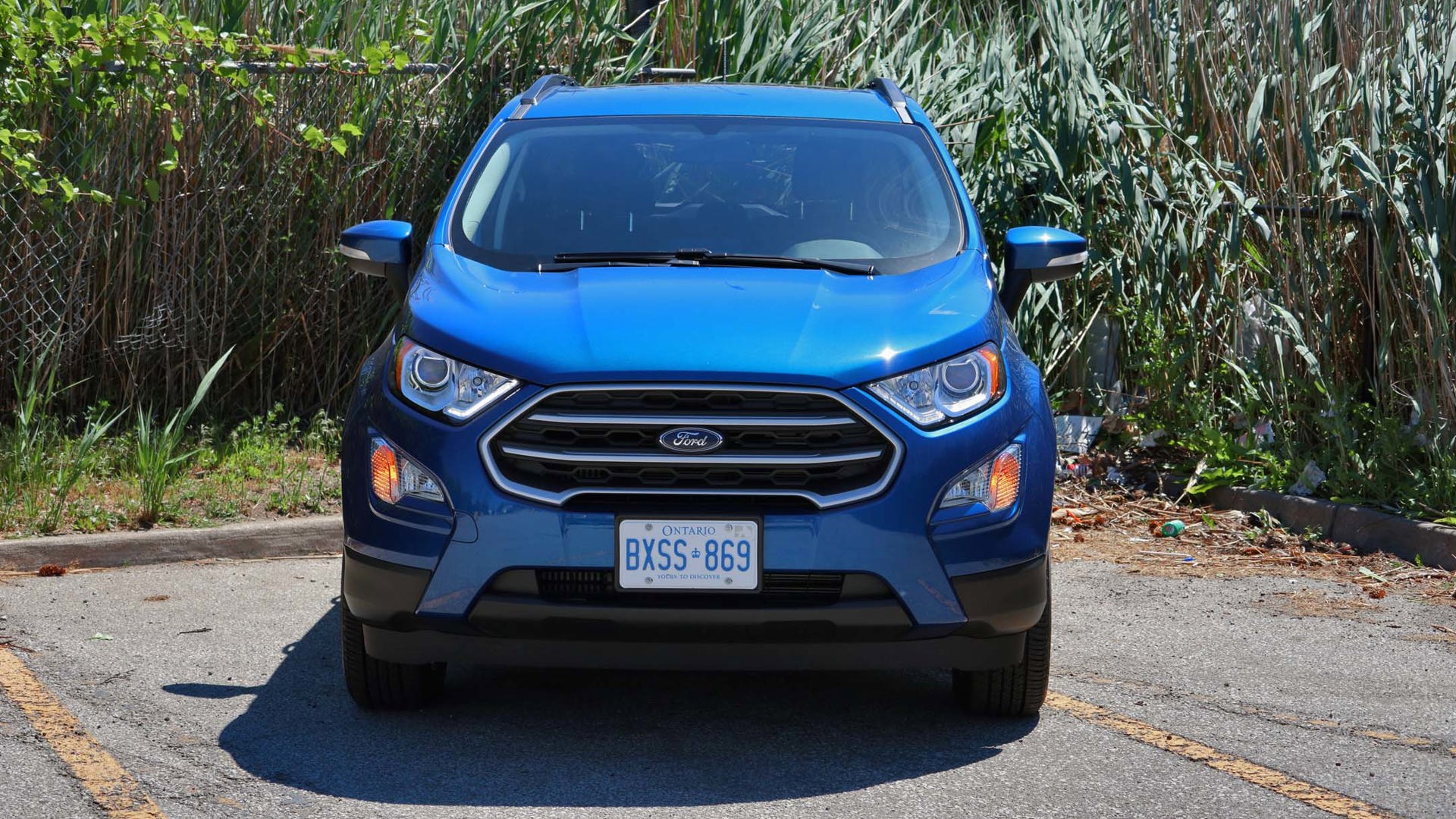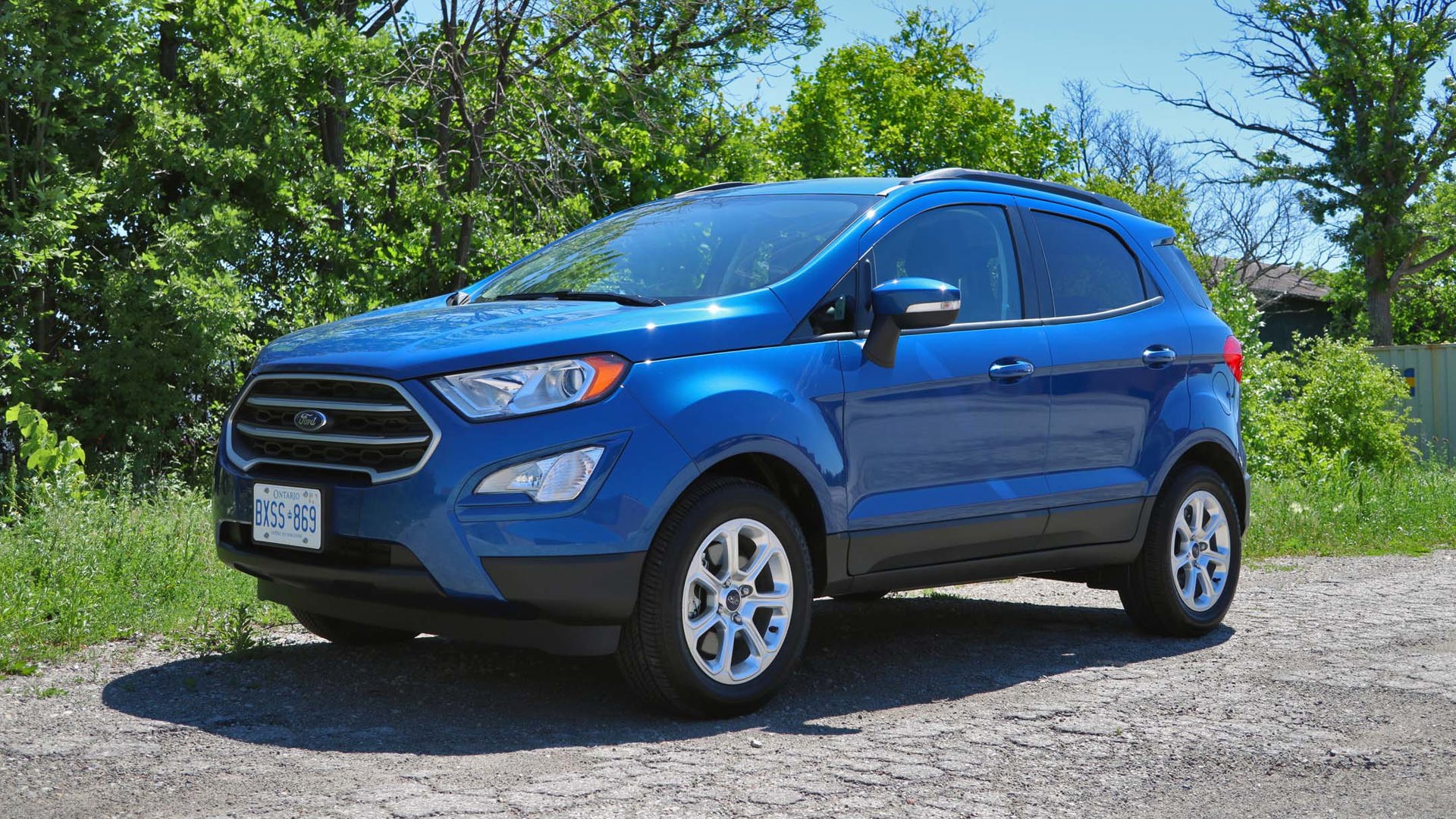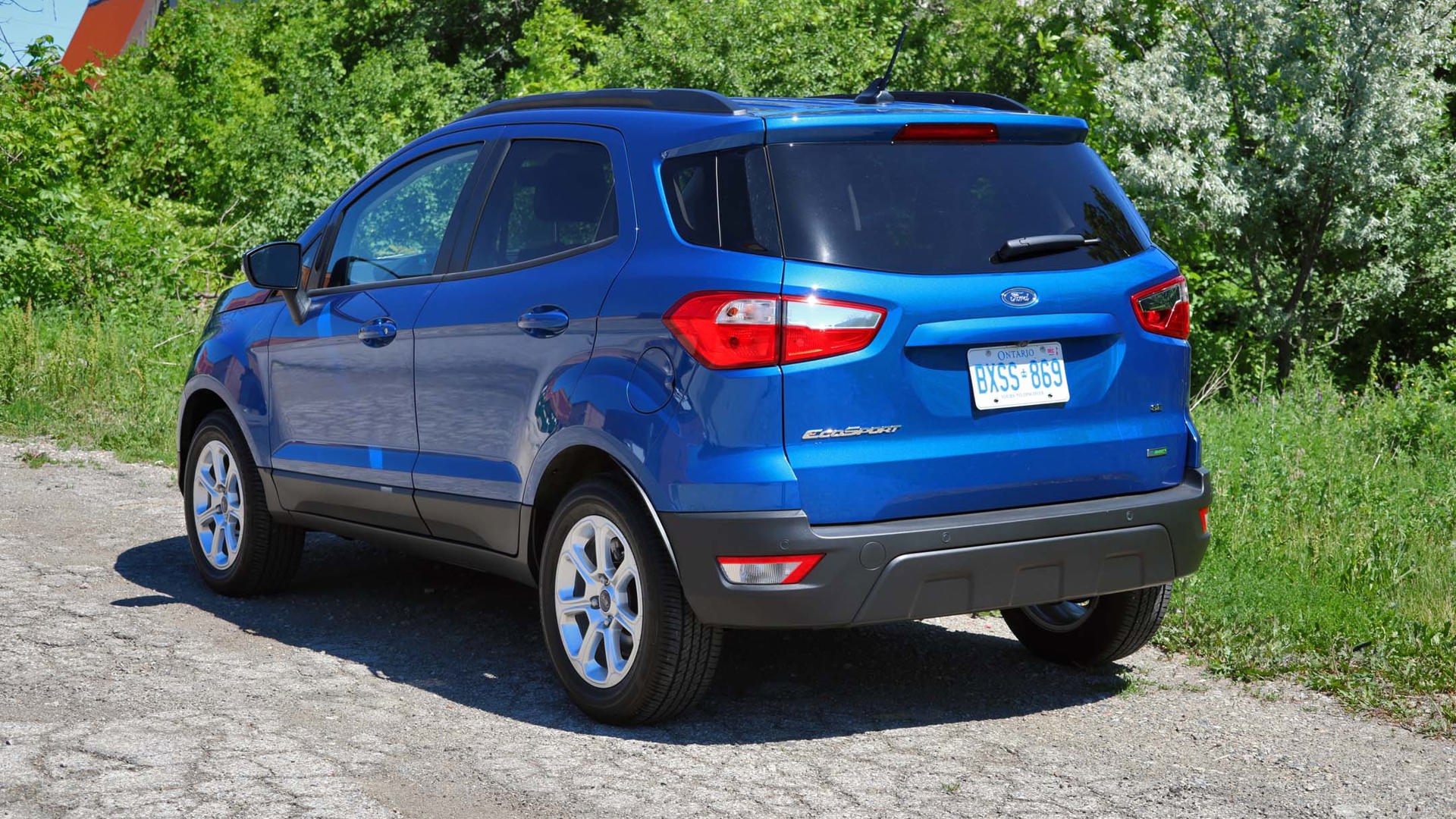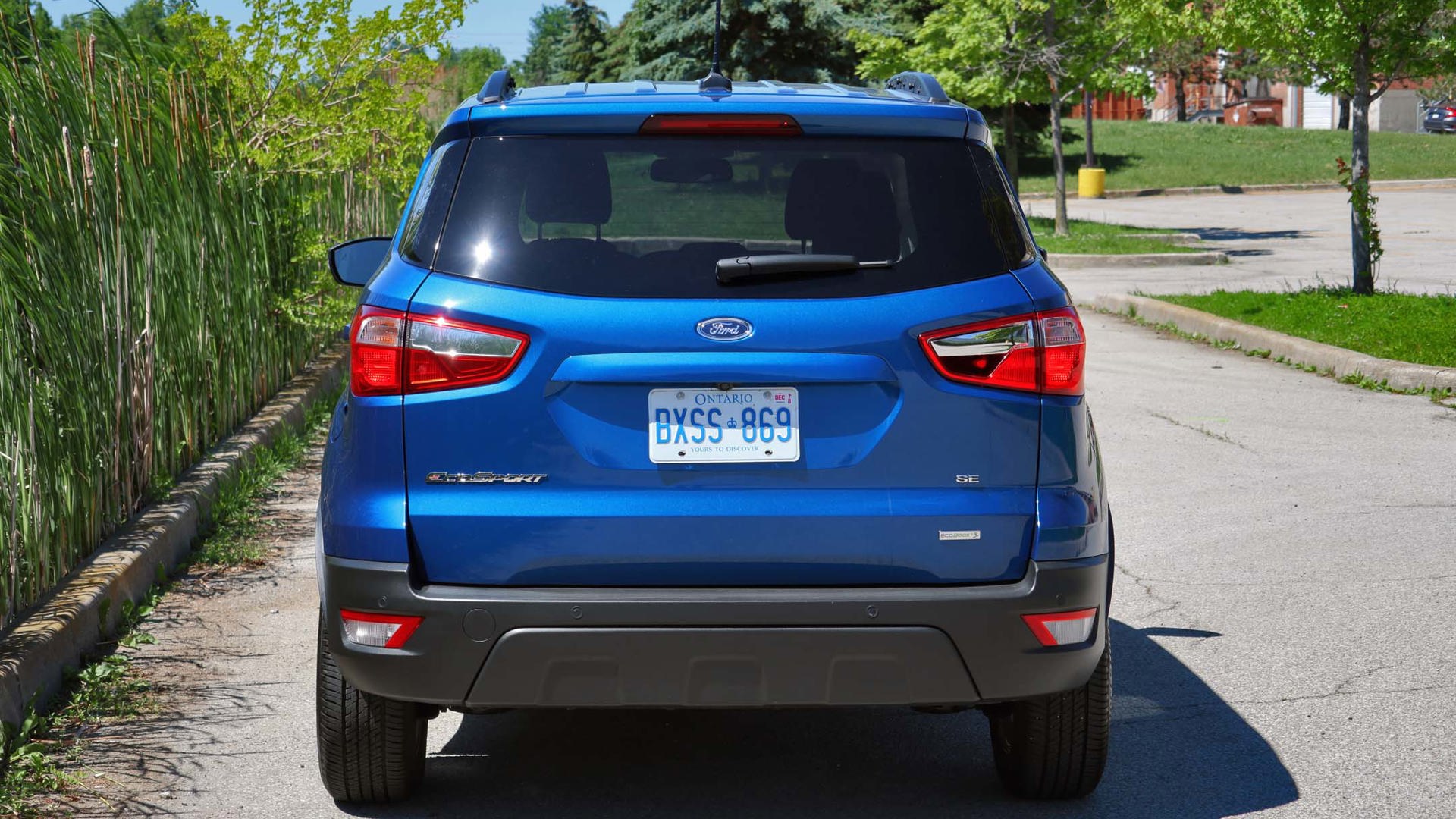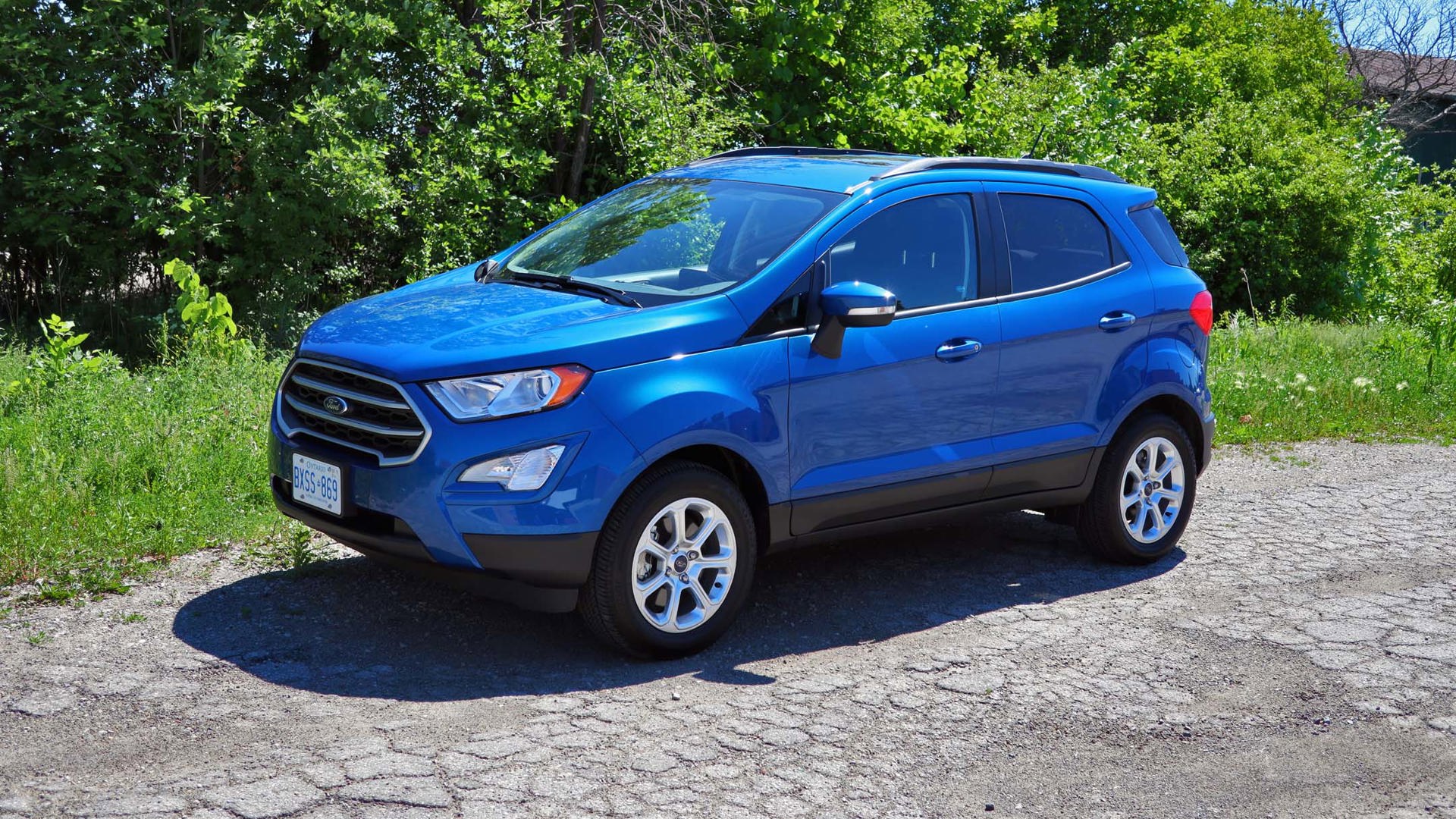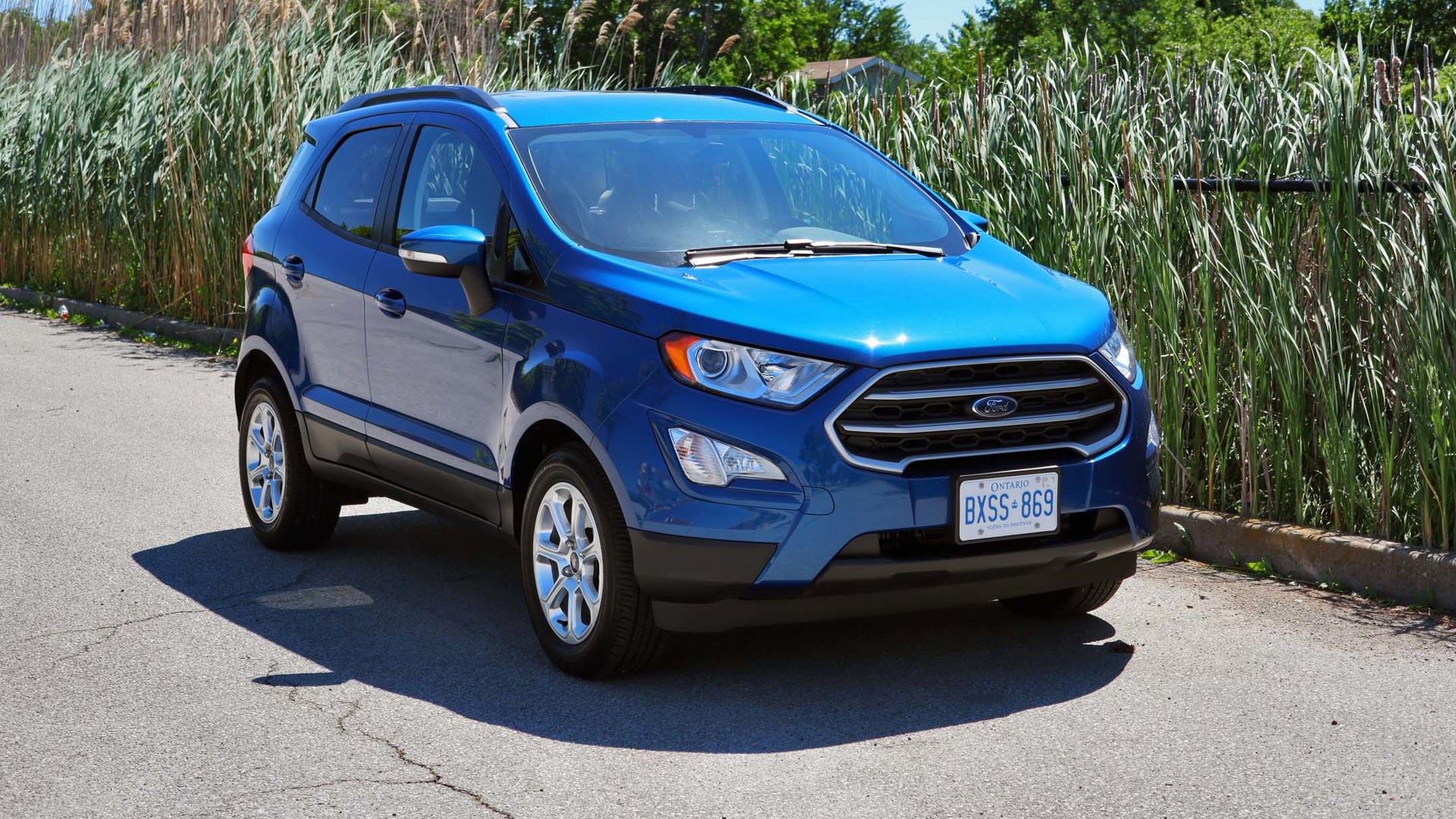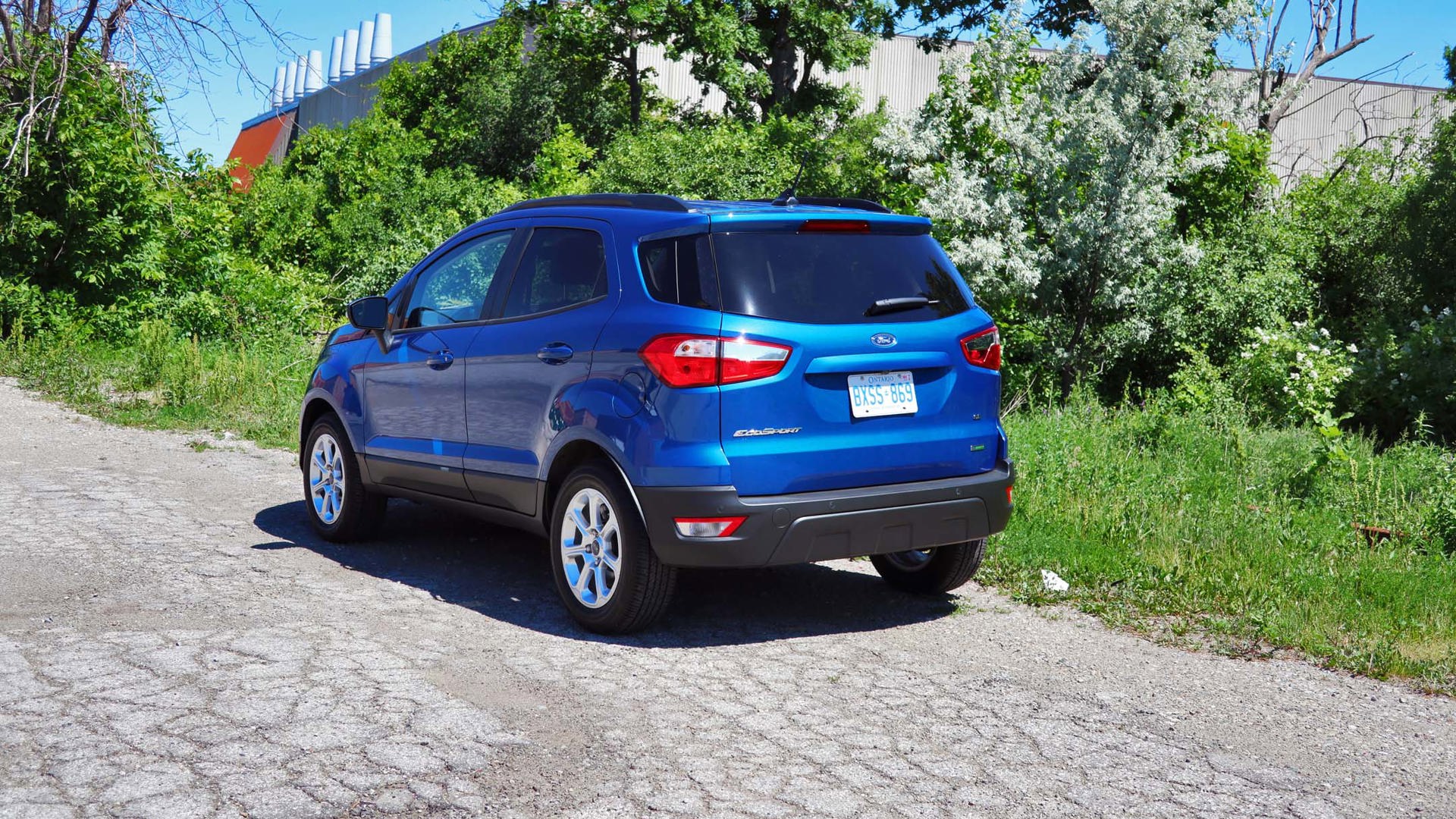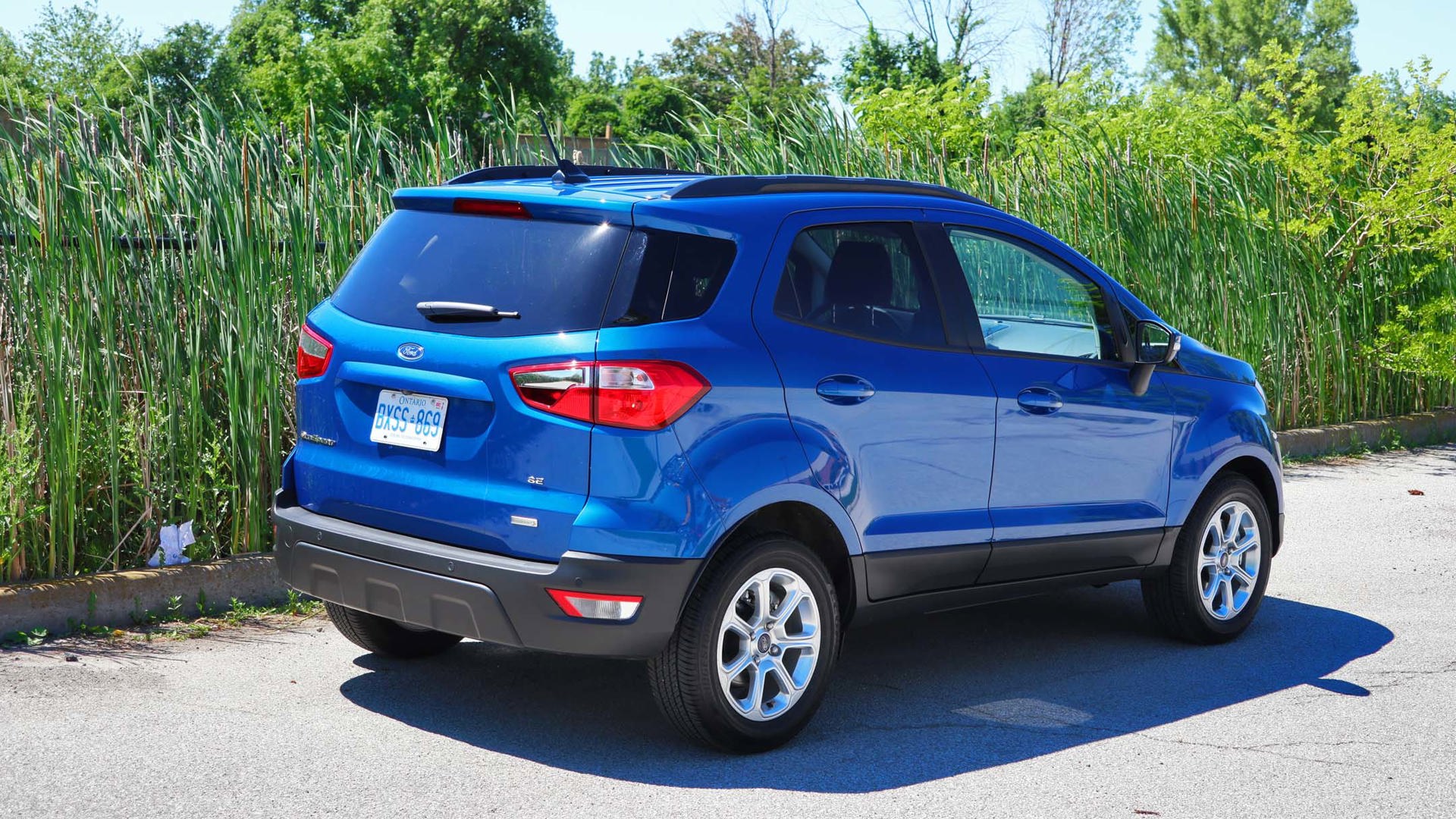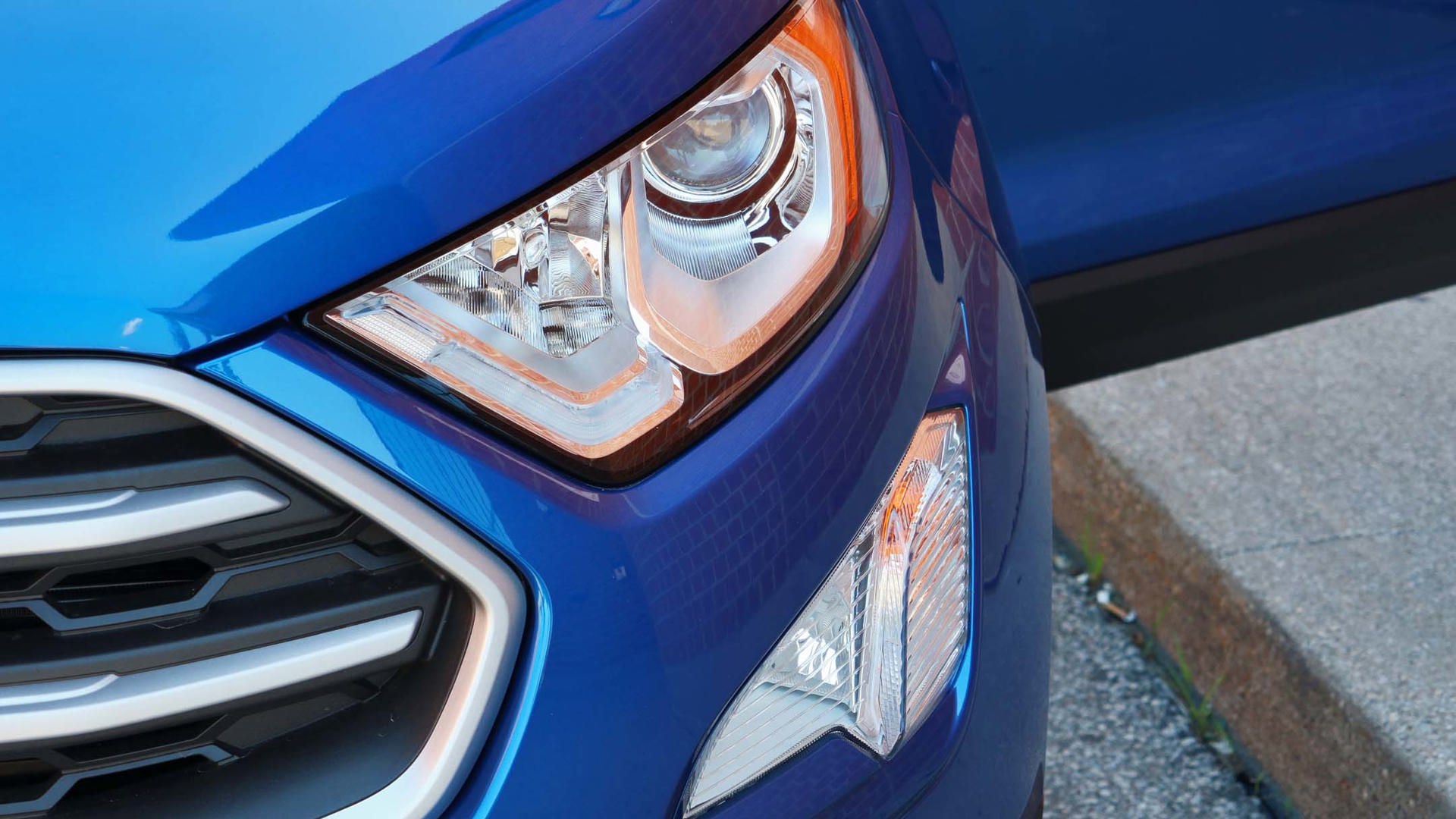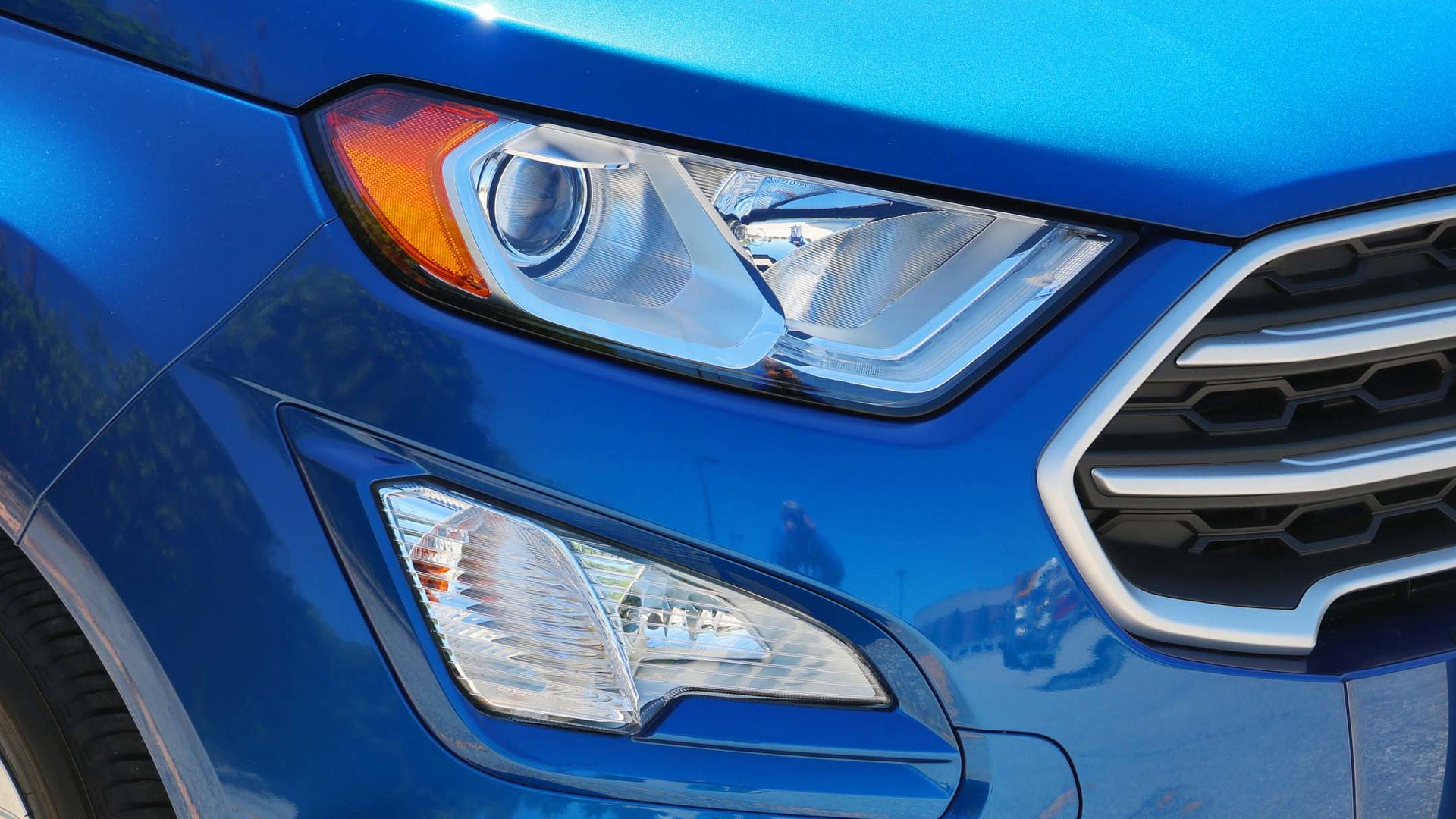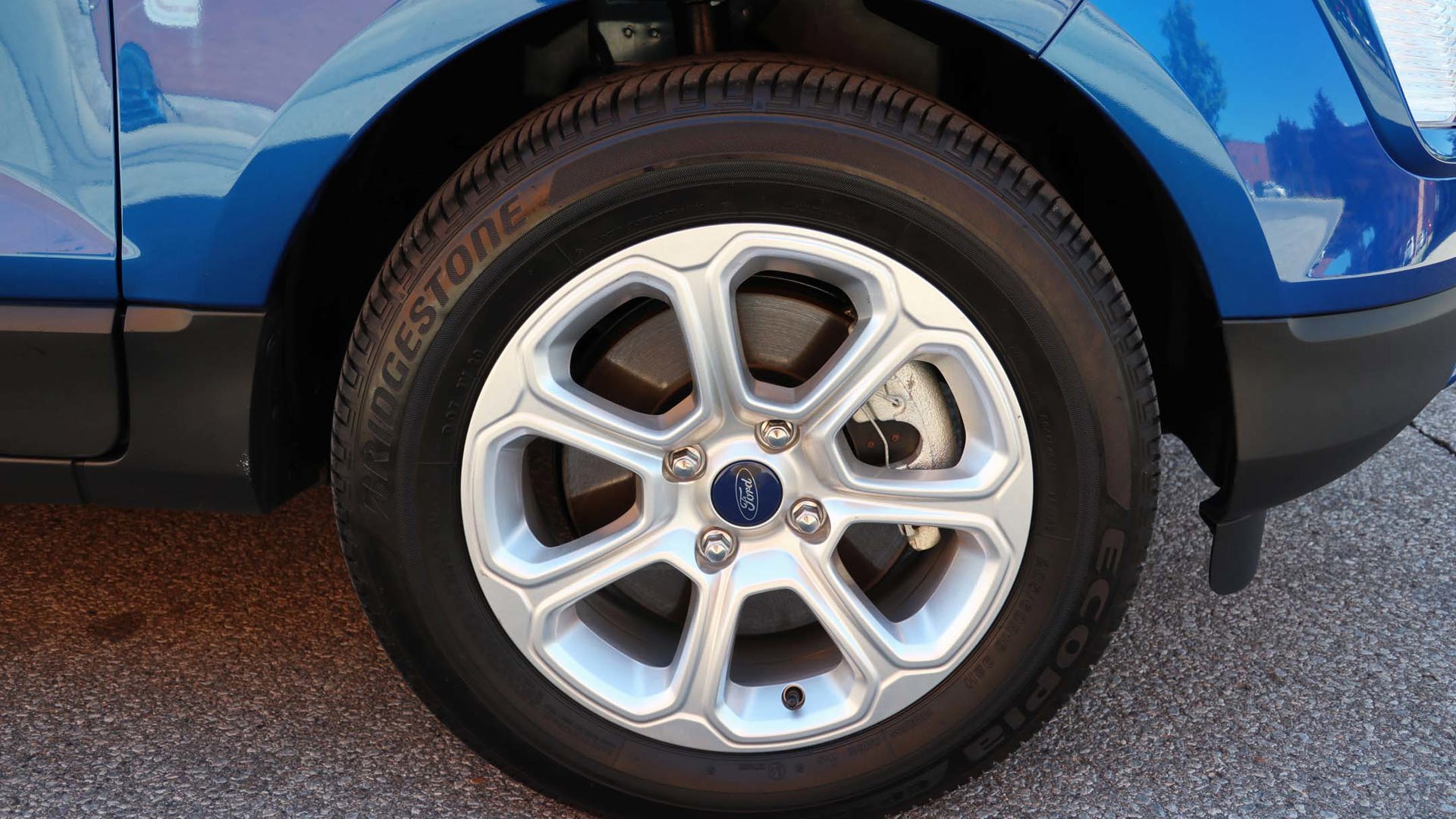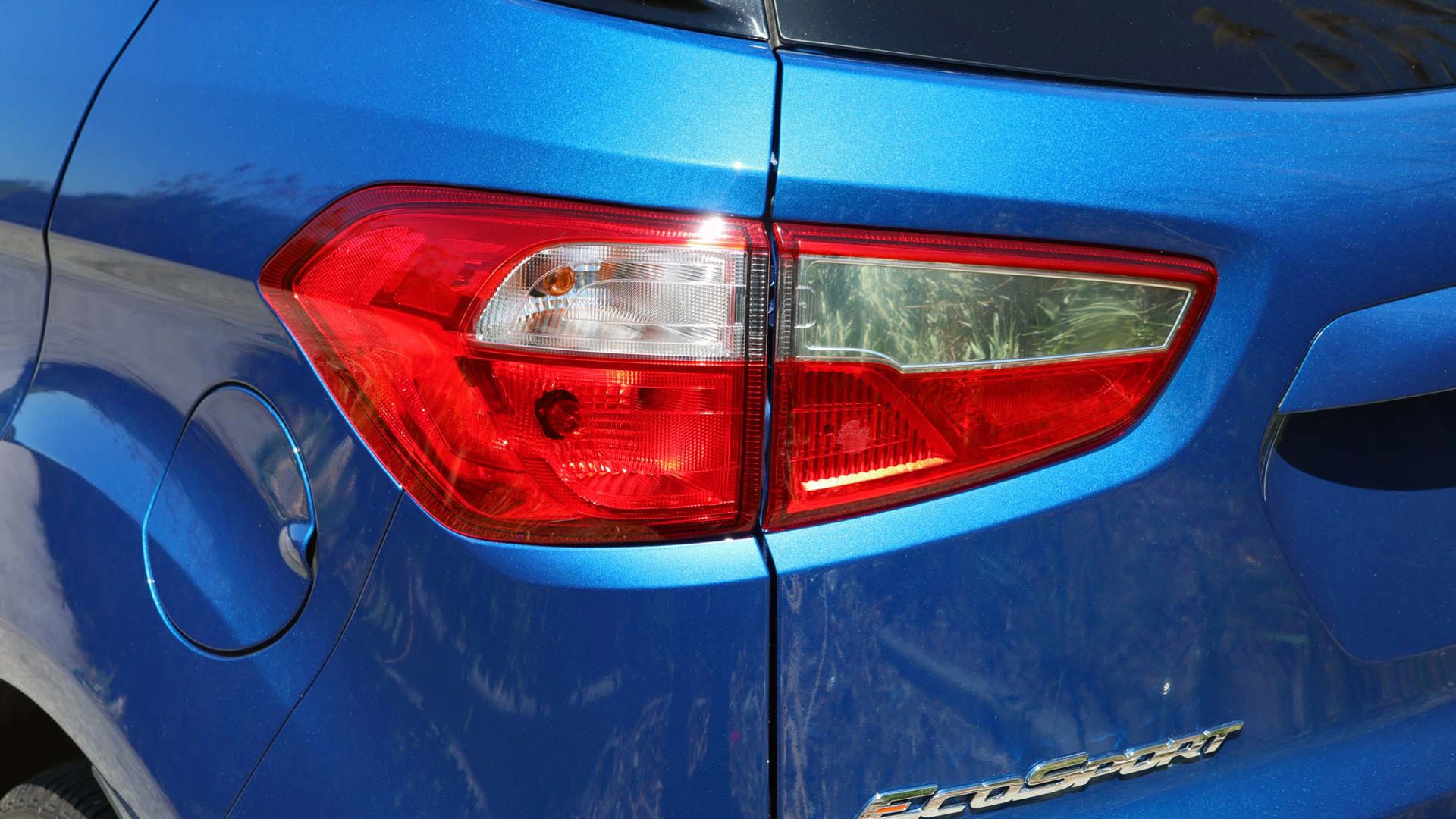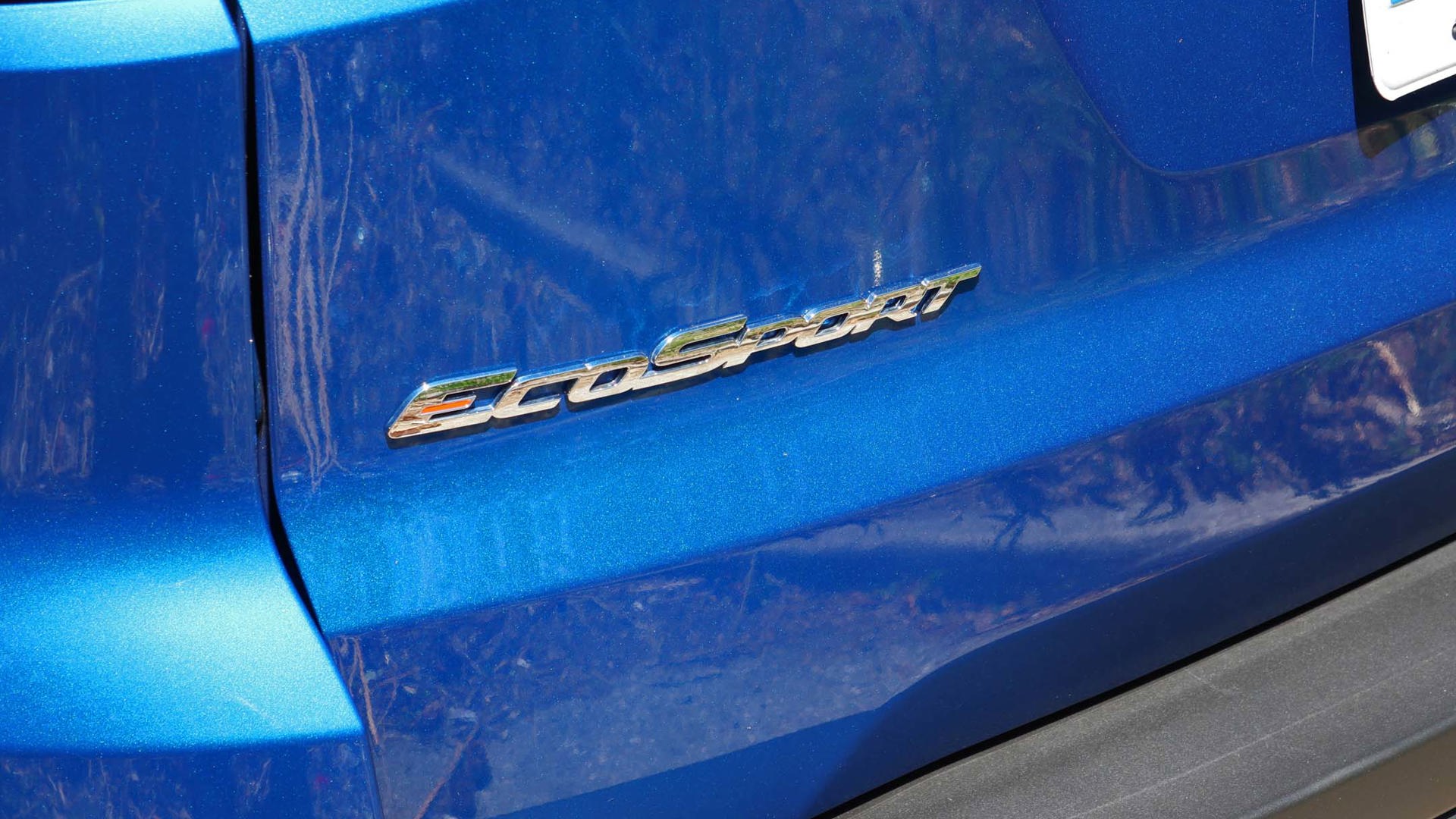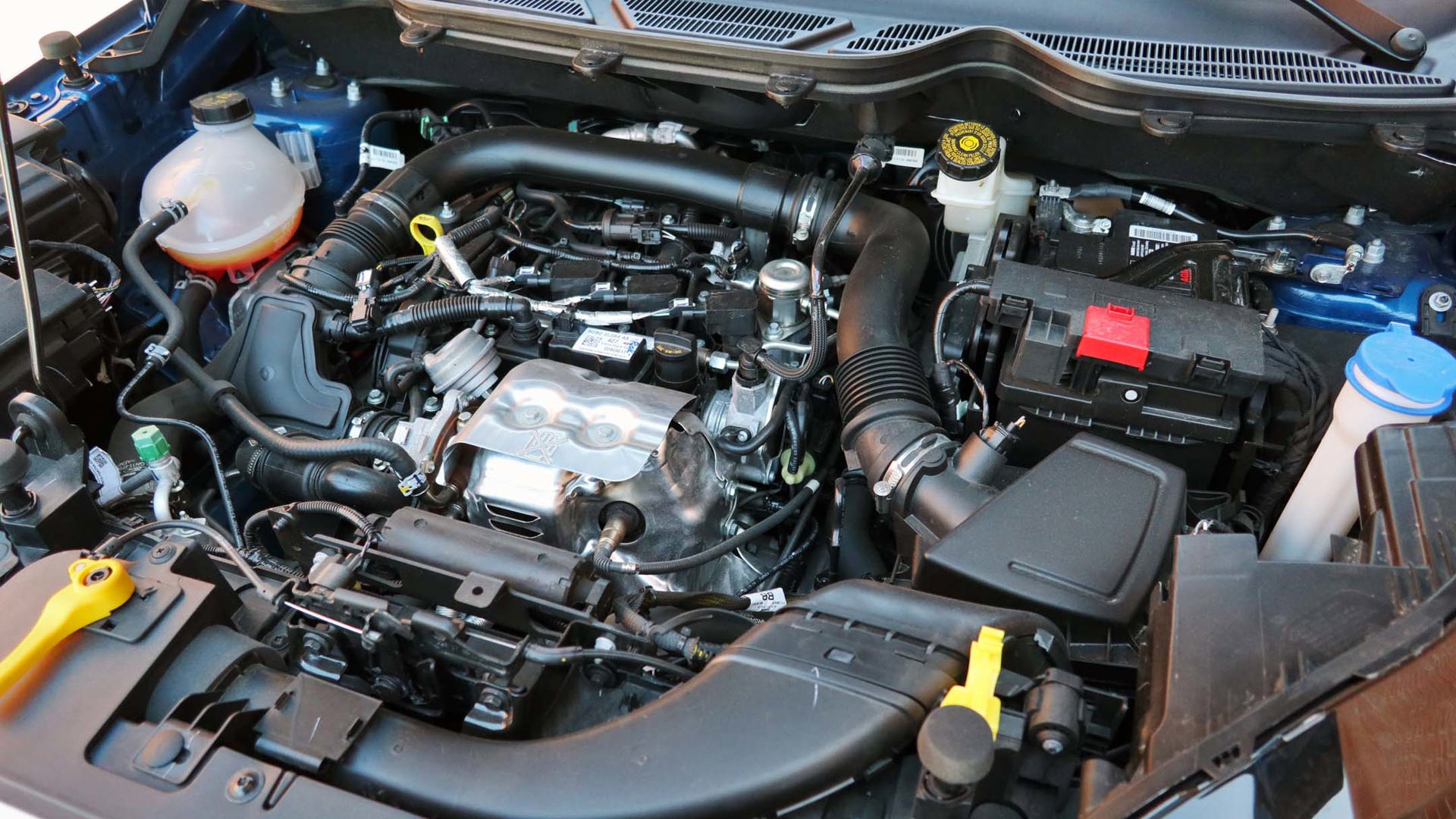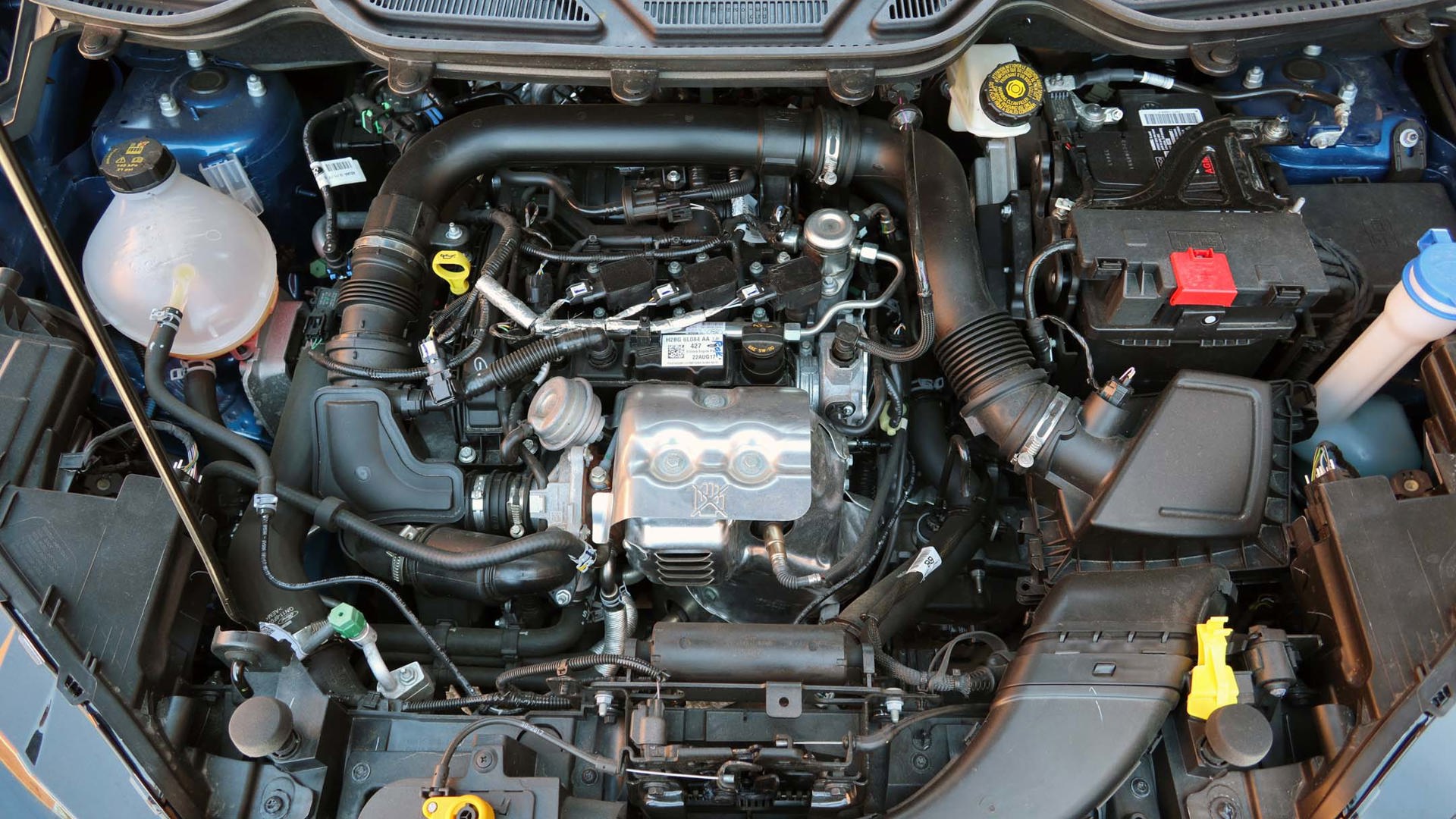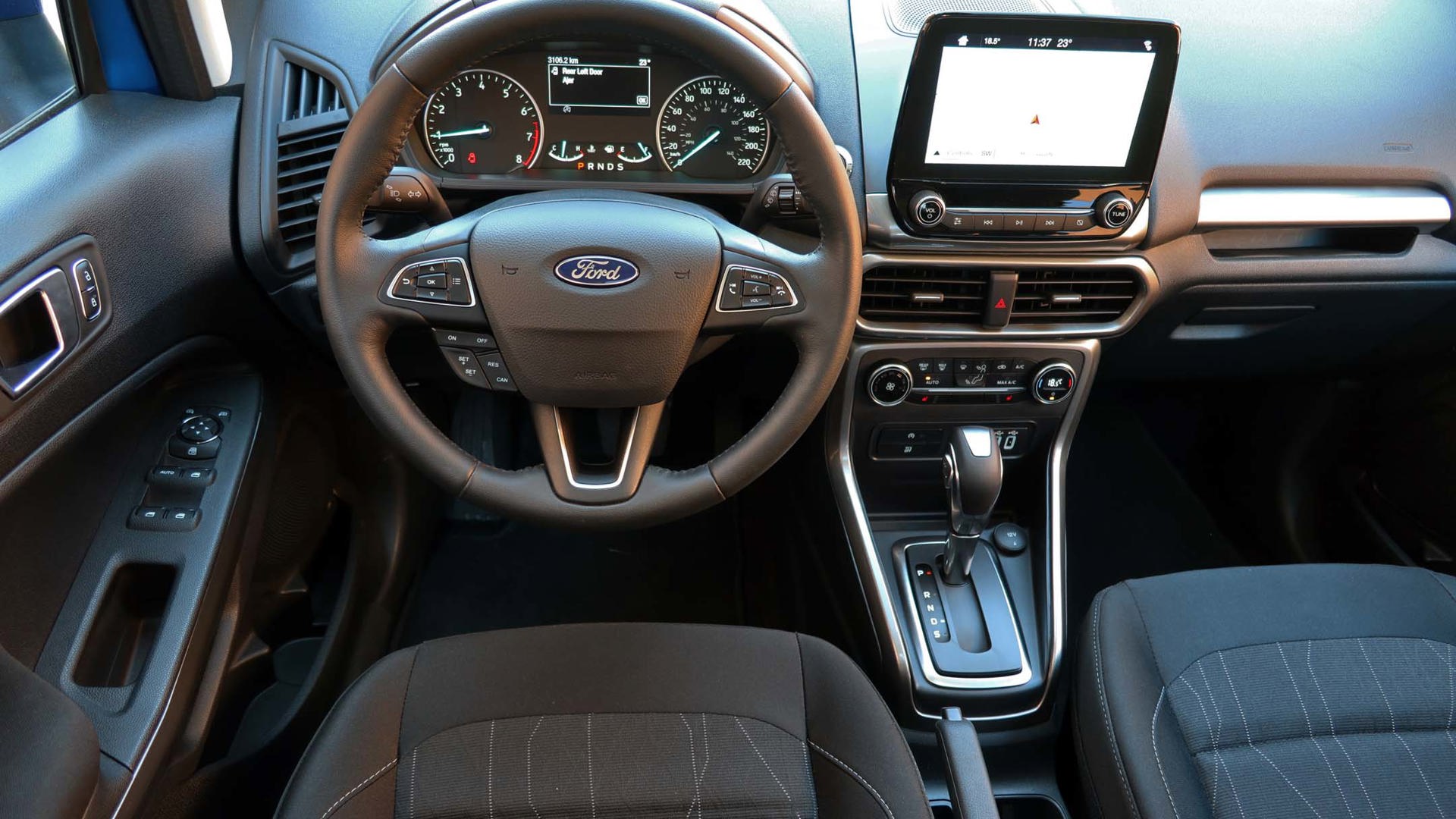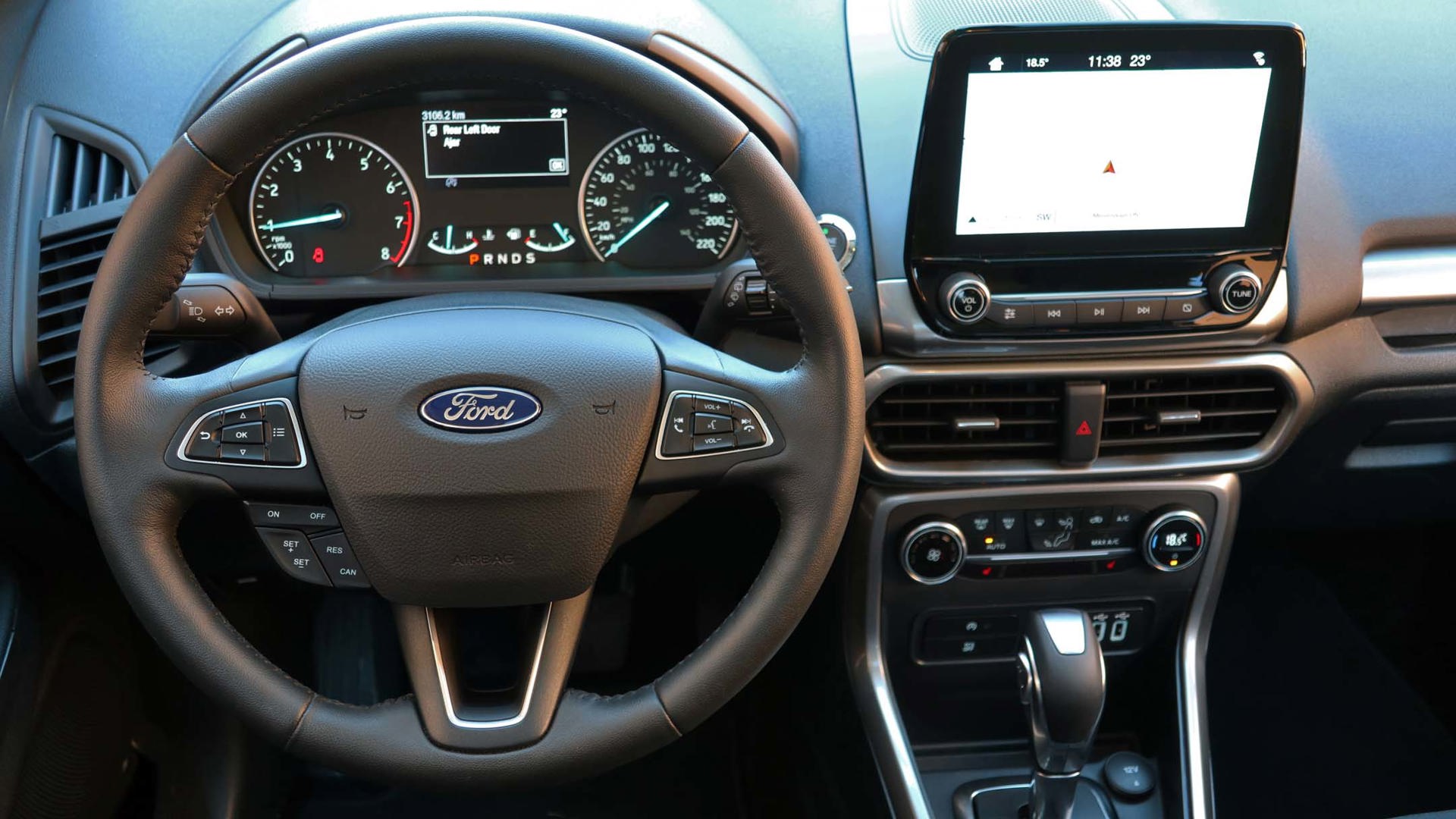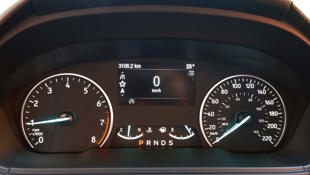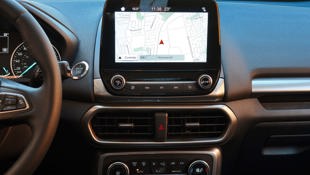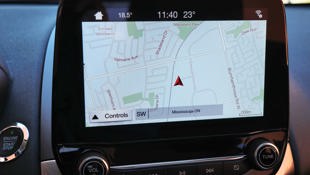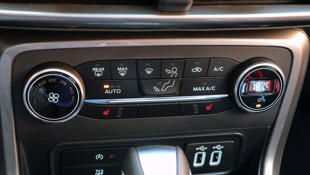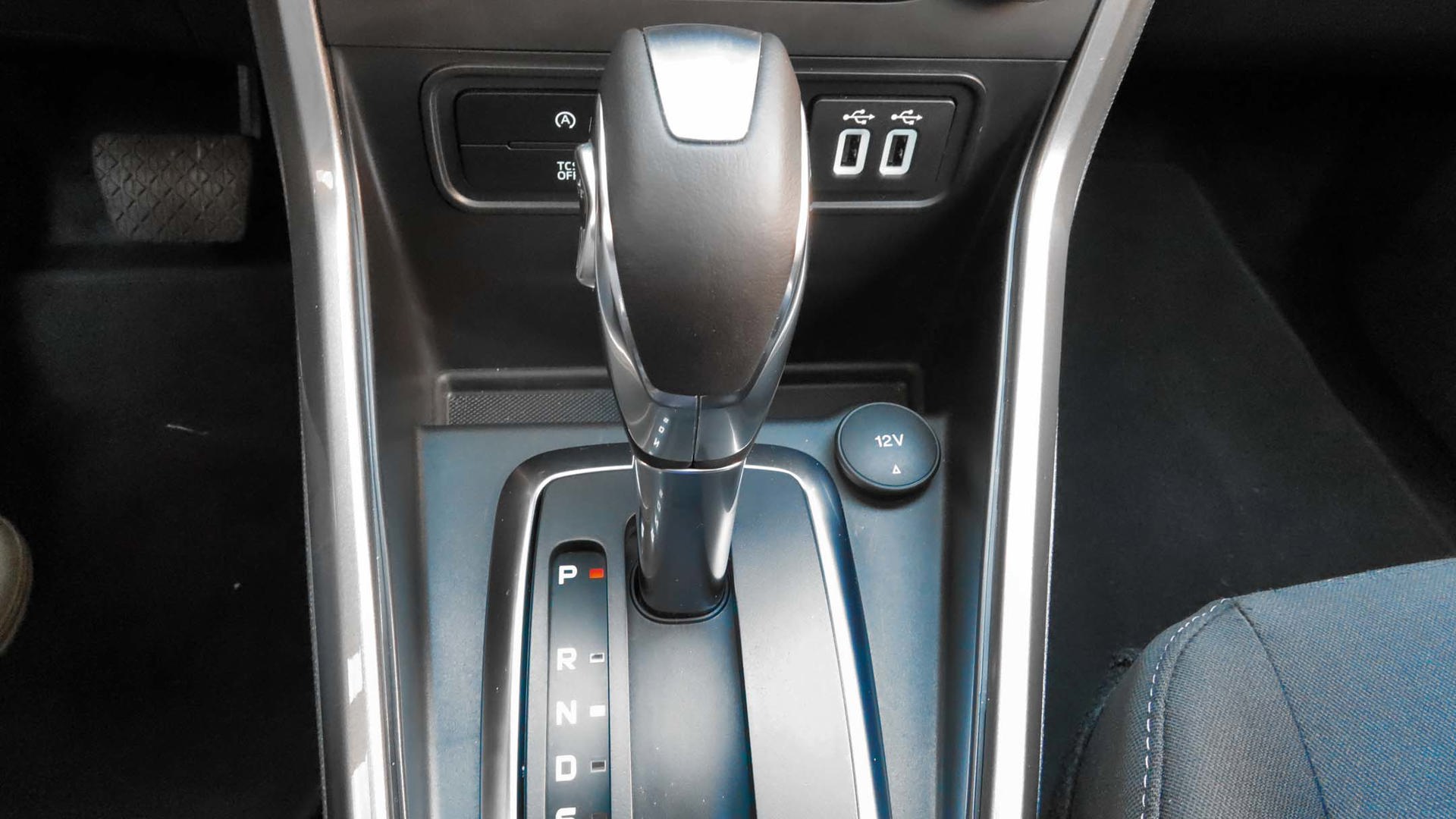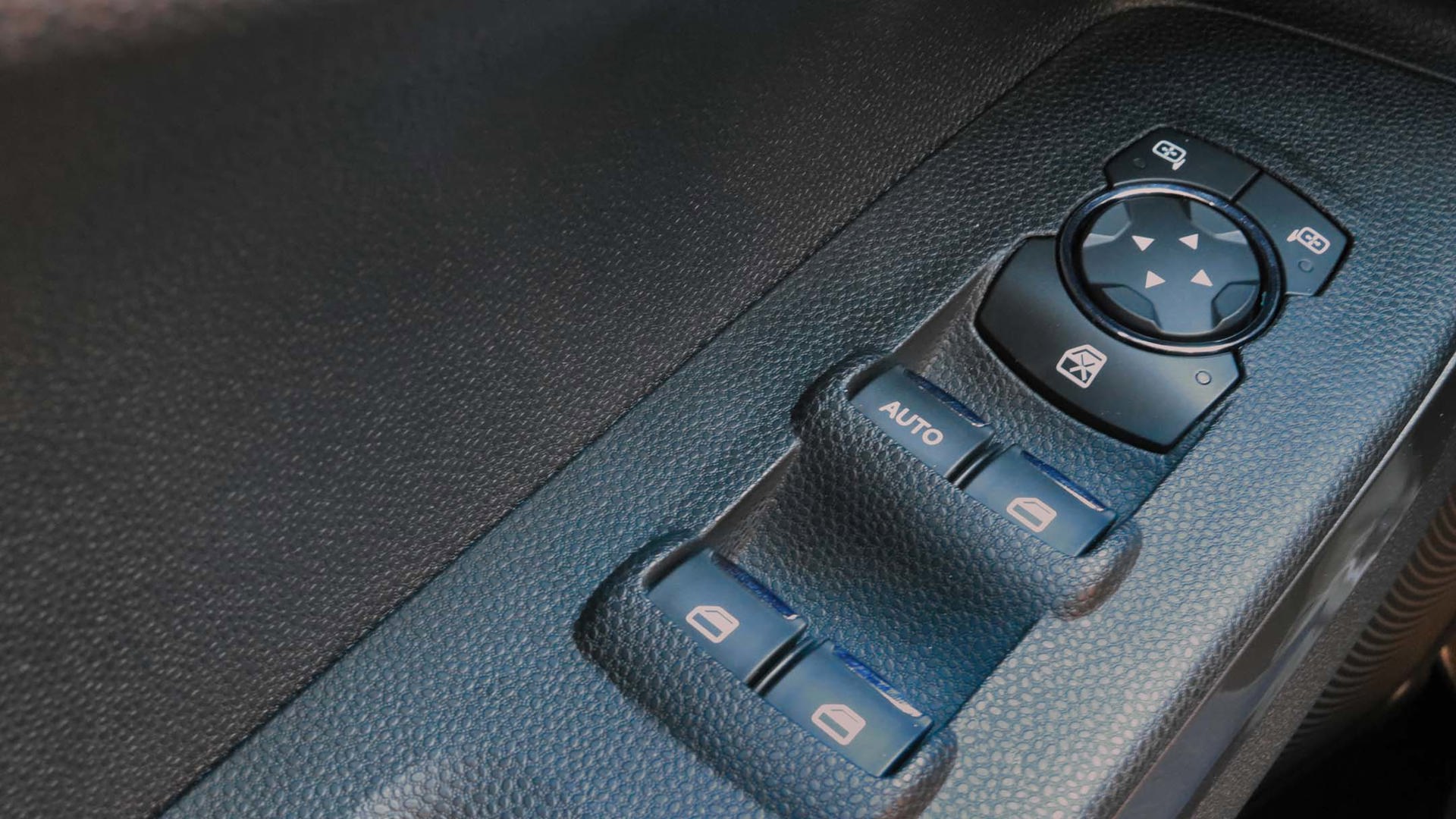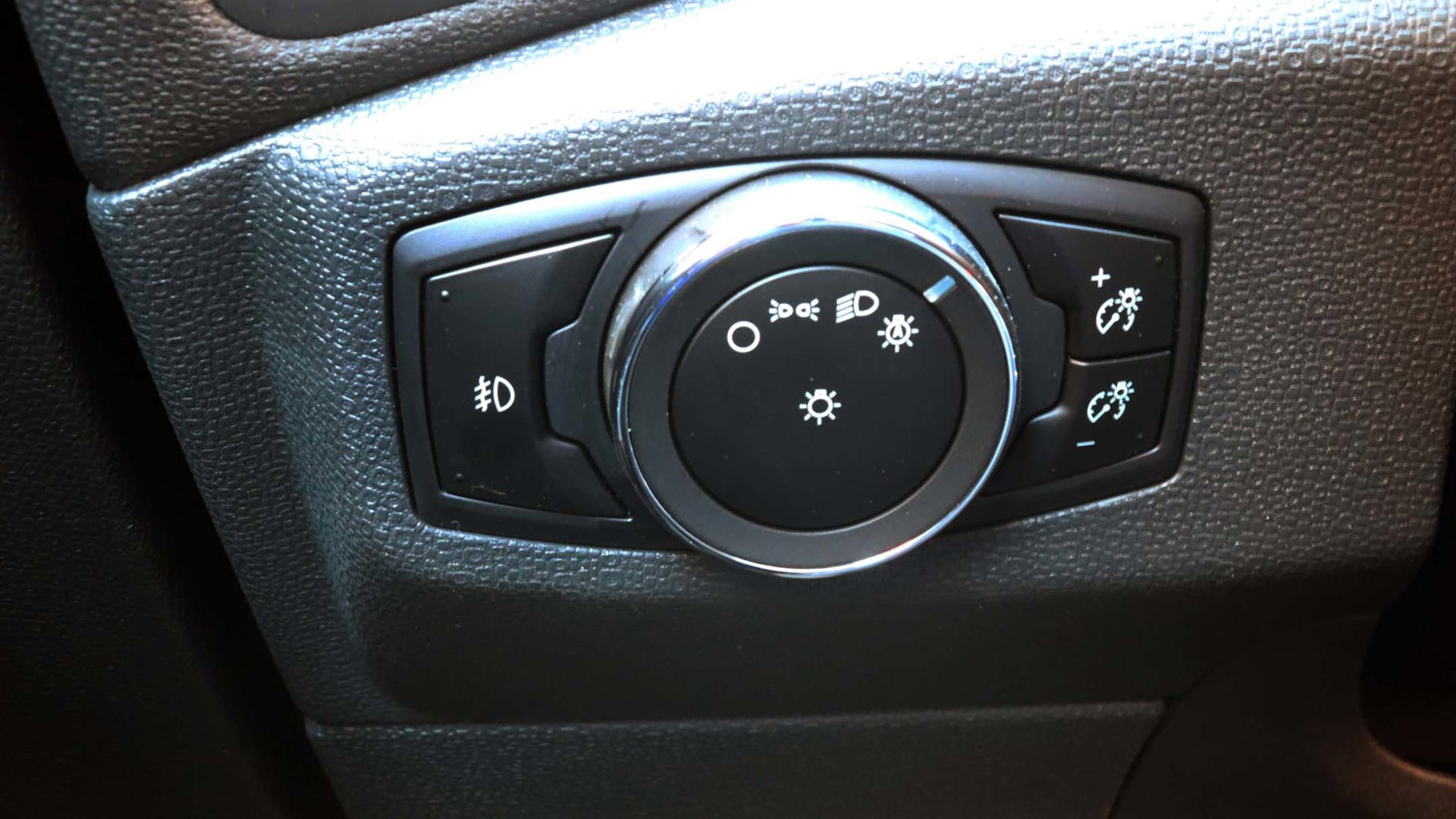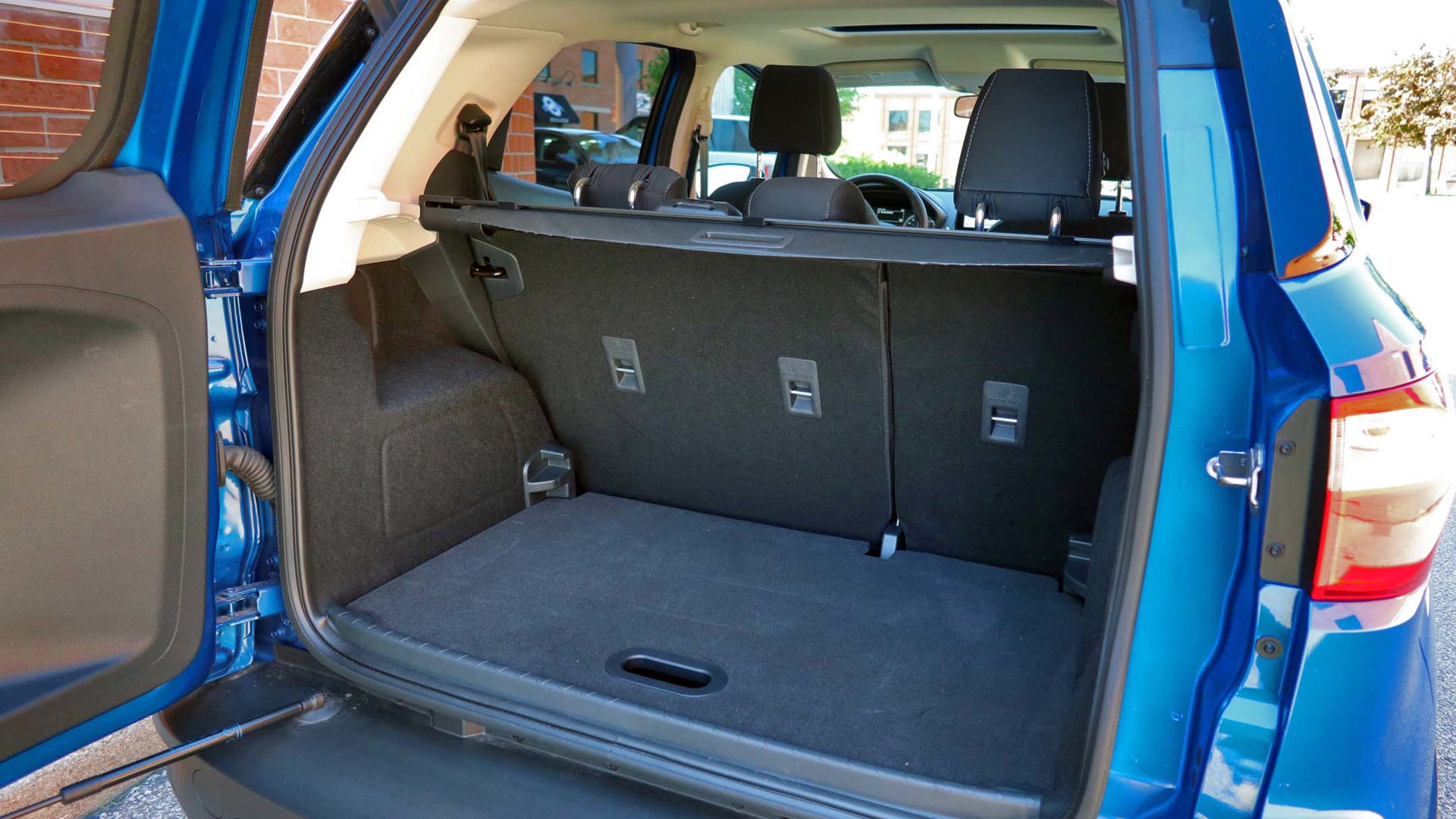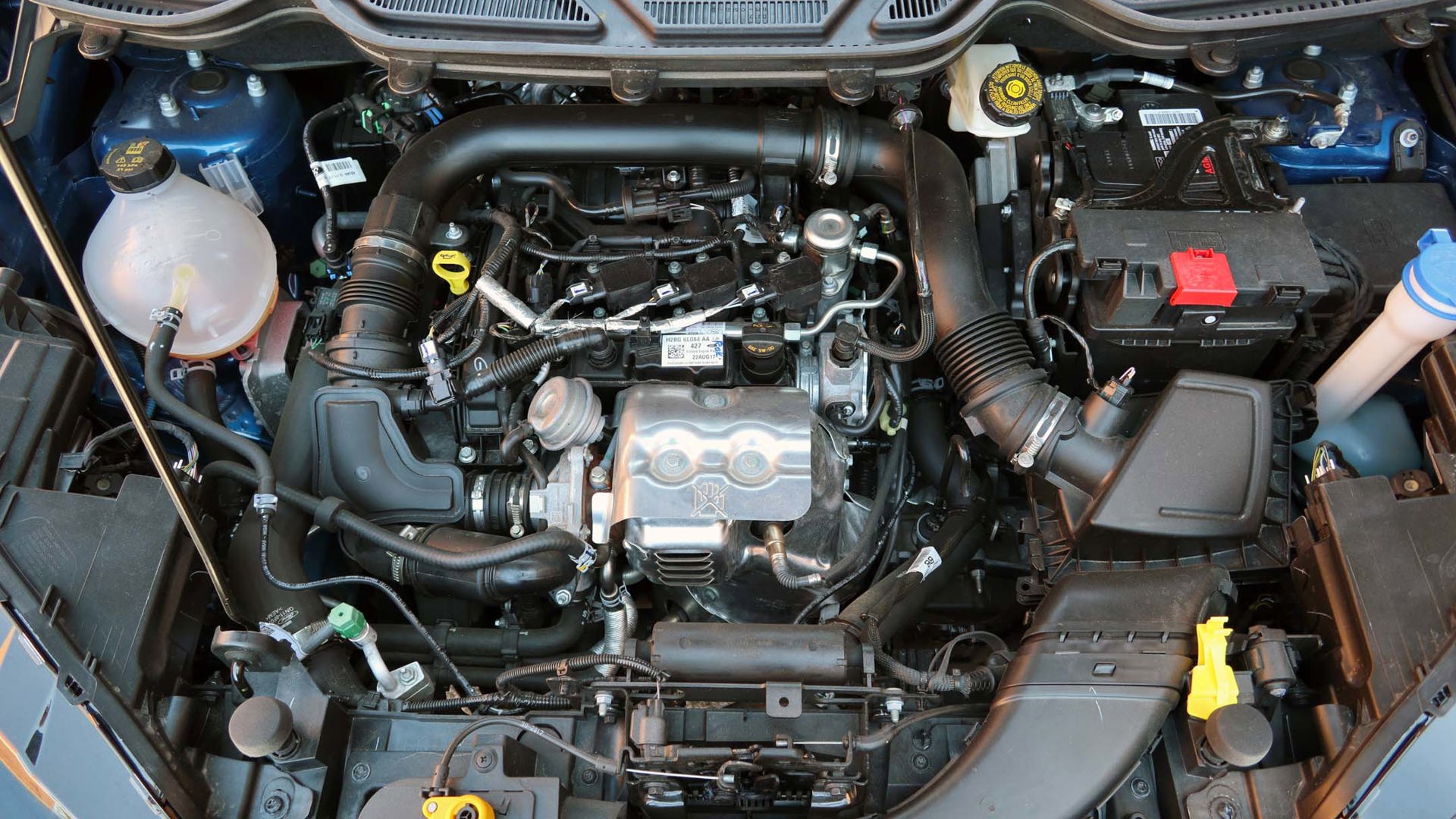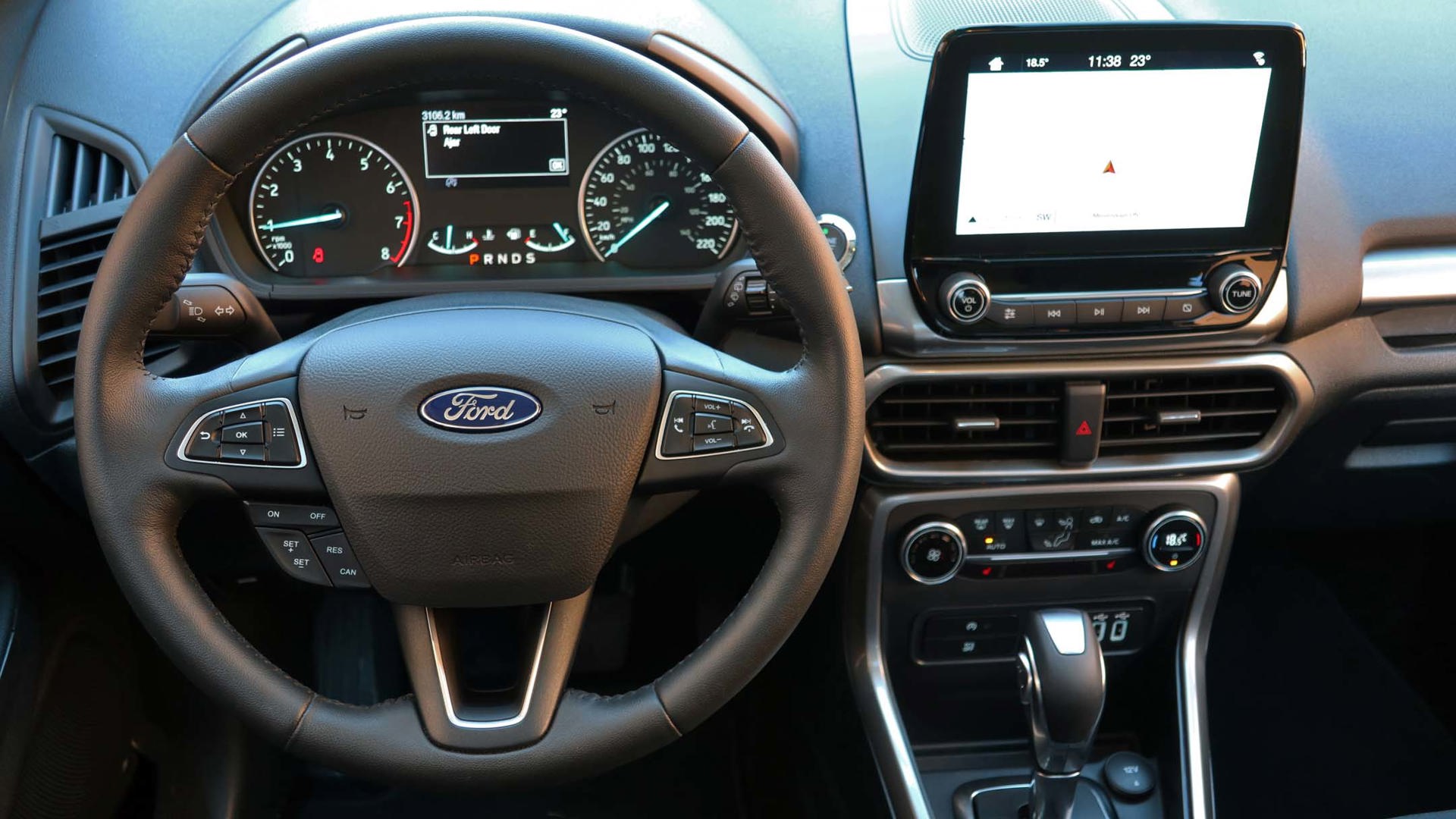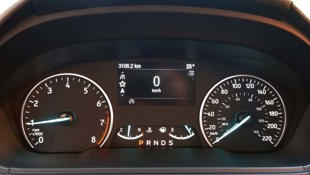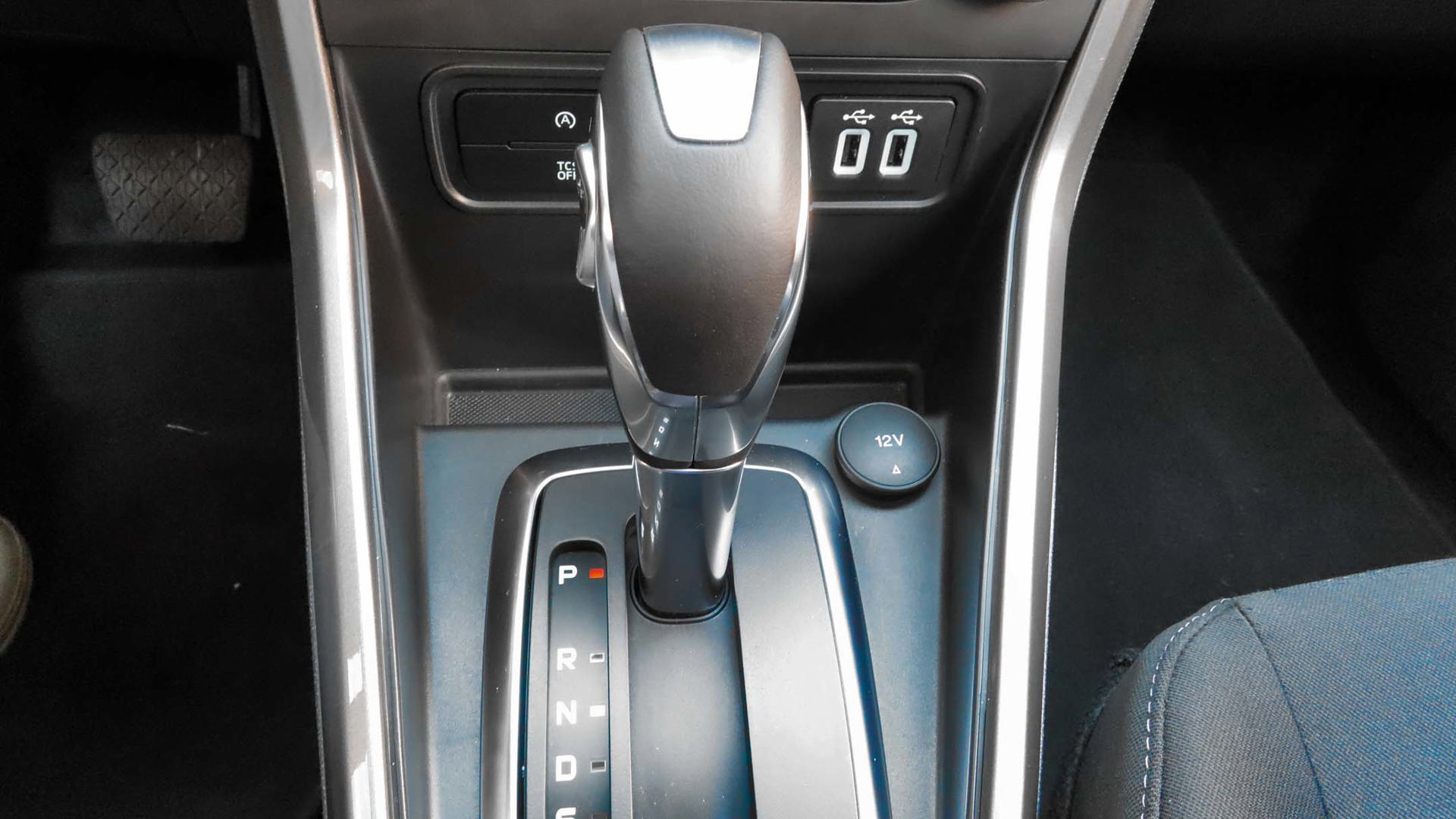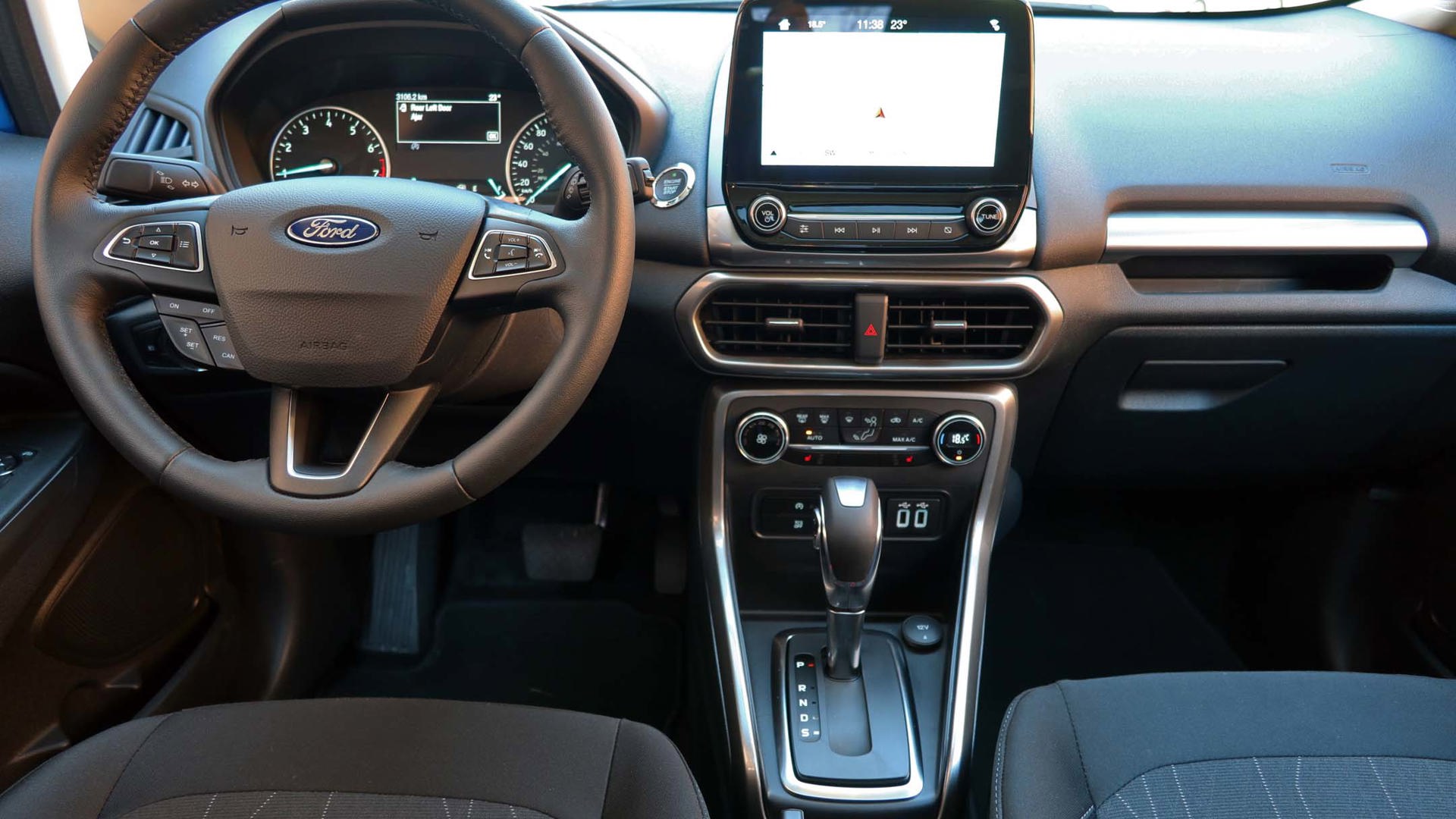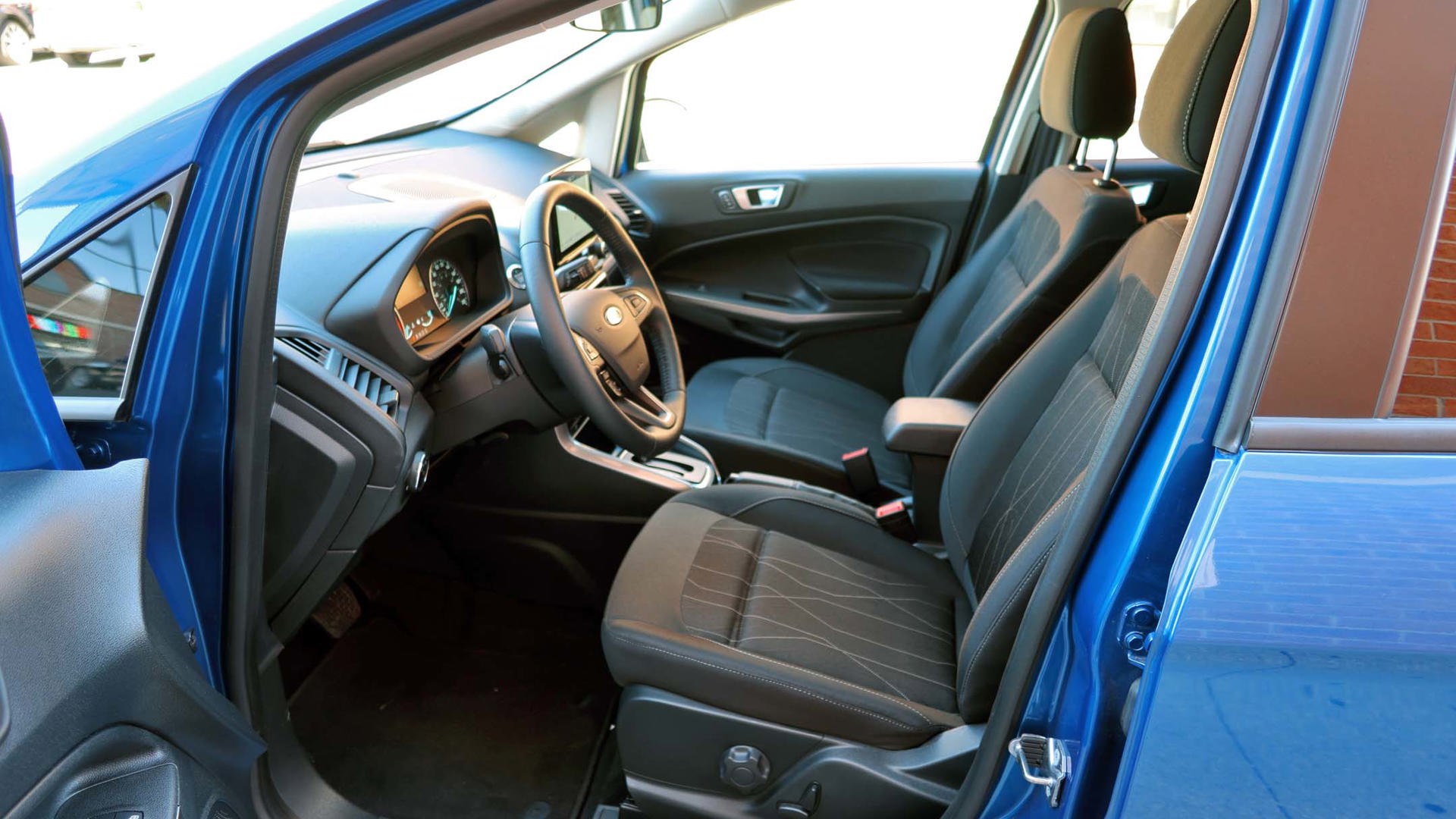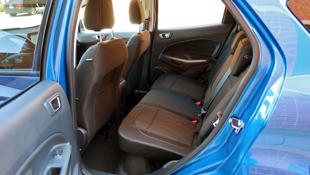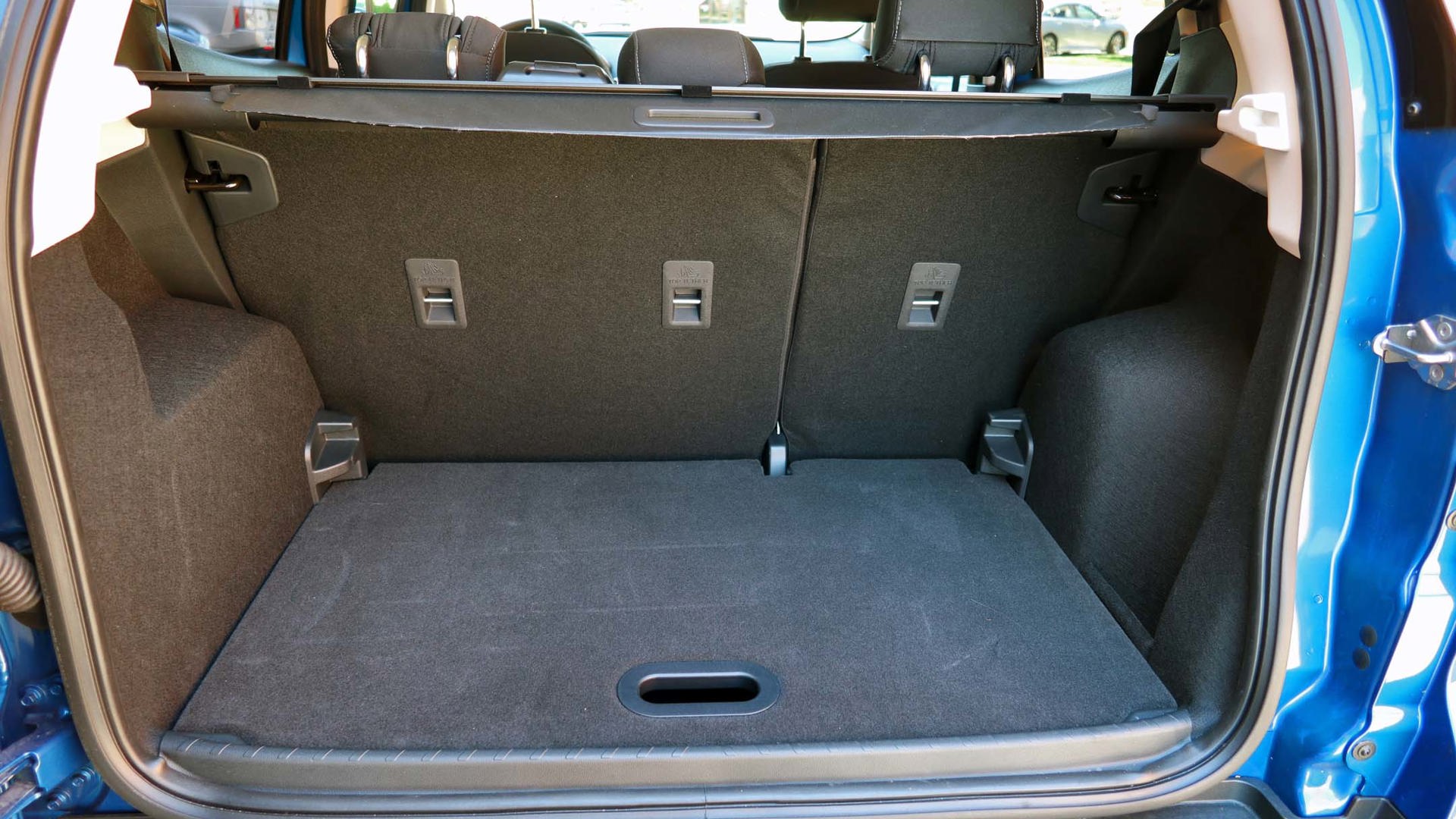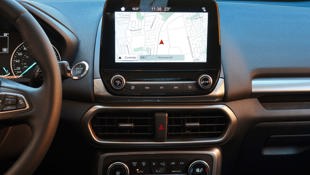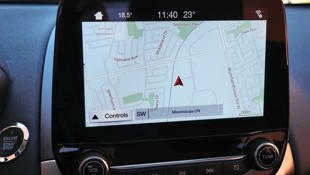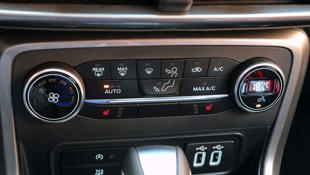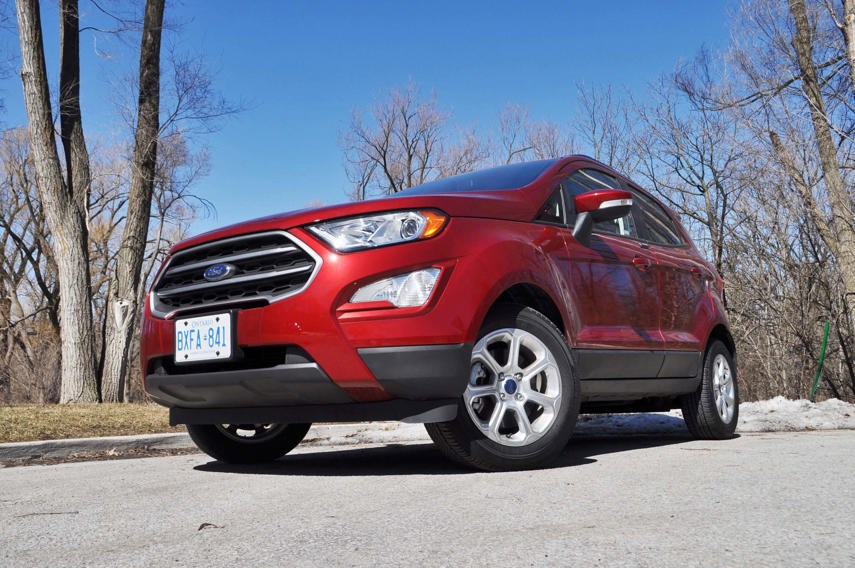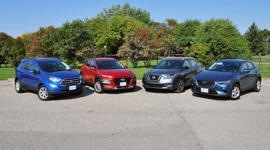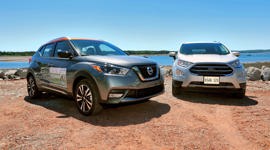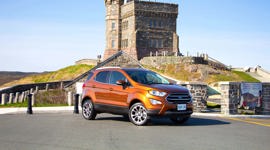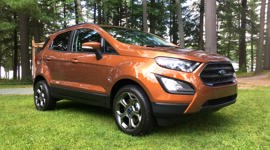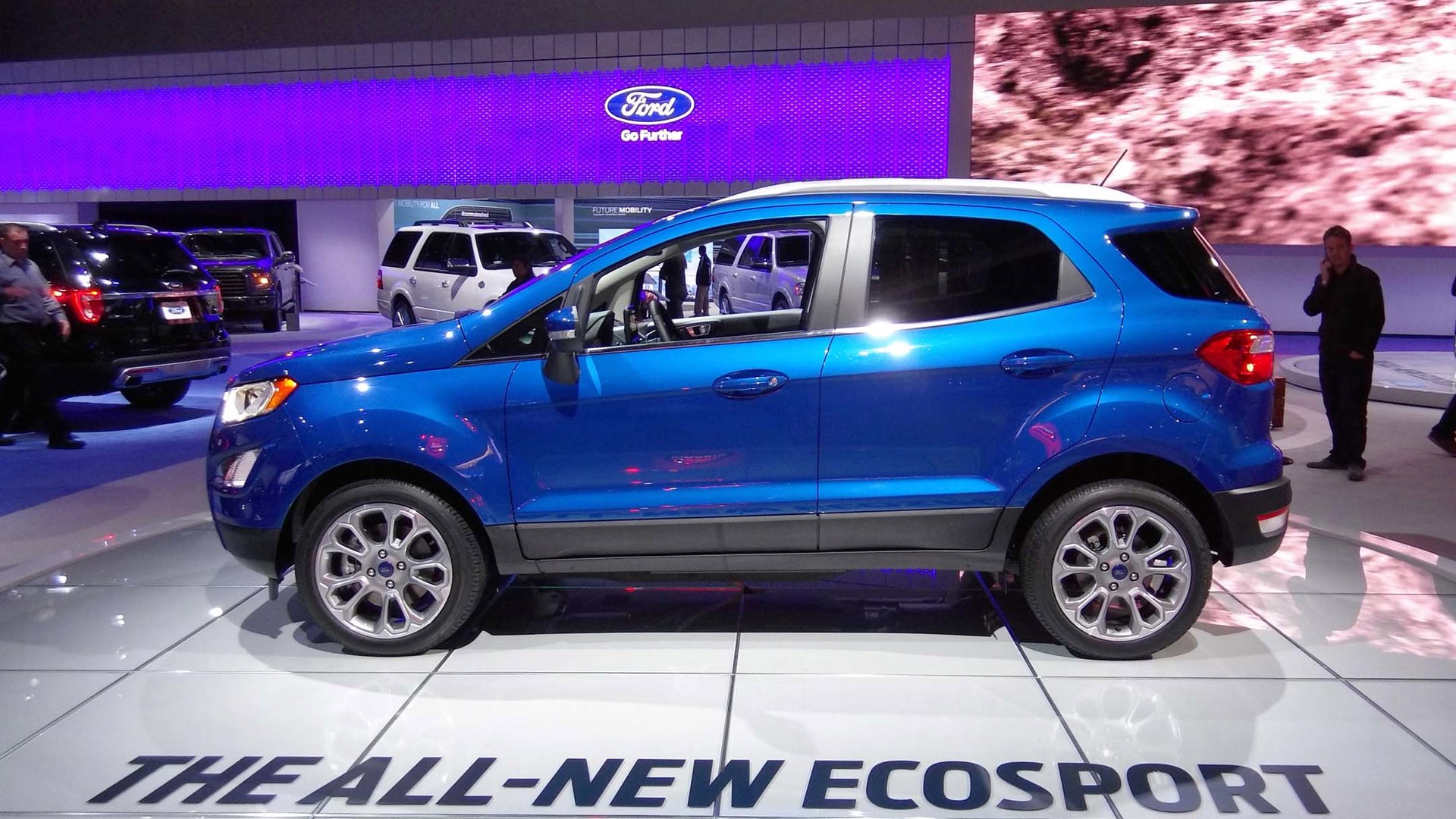 AutoTrader SCORE
AutoTrader SCORE
-
STYLING8/10
-
Safety6/10
-
PRACTICALITY8/10
-
USER-FRIENDLINESS8/10
-
FEATURES7/10
-
POWER7/10
-
COMFORT7/10
-
DRIVING FEEL7/10
-
FUEL ECONOMY8/10
-
VALUE6/10
Despite its popularity since the dawn of time, the sedan is on life support, and it looks like Ford is going to pull the plug pretty soon. Among those models taking over from cars is a new segment of subcompact crossovers with a few new players, and the Blue Oval’s version is the 2018 Ford EcoSport.
That tiny one-litre – half the displacement of a family-sized soda bottle! – is a better choice than you might expect.
The nameplate has been around in global markets for some fifteen years, although it’s all-new-to-us for the 2018 model year. It’s based on the Ford Fiesta platform and vehicles for Canada are built in Chennai, India. And despite the fact that its little turbocharged engine is called an Eee-ko-boost, Ford would like you to call the vehicle an Echo-sport.
Two engines are available and I drove the smaller of the two, a 1.0L three-cylinder EcoBoost that ramps out 123 horsepower and 125 lb-ft of torque. It comes with a six-speed automatic and solely in front-wheel drive. It starts at $20,999 in base S trim, while my next-step-up SE tester began at $25,099. You can also get it in Titanium trim, which starts at $28,599.
An optional 2.0L four-cylinder, making 166 horsepower and 149 lb-ft of torque and mated with all-wheel drive, can be added for $2,500. That’s the sole power choice on the top-line SES, which begins at $29,399.
Despite the single-litre’s small power numbers, you shouldn’t turn up your nose at it. Slamming your foot straight to the floor will give you far more sound than fury as everything works hard to meet your demand, but if you drive the EcoSport under normal commuter conditions it’s actually pretty peppy, especially since its conventional transmission avoids the rubbery whine you’d undoubtedly get if the little engine was hooked to a CVT. And while you don’t get gut-busting bursts of acceleration for passing on the highway, the little engine’s power delivery is smooth and linear enough at higher speeds that it’s very easy to end up in “Hello, officer” territory if you’re not paying attention.
The engine includes automatic stop-start, which shuts it off at idle such as when you’re waiting for a light (the climate control, lights, and other functions continue to run), but you can disable it if you like. The one-litre EcoSport is officially rated at 8.4 L/100 km in combined driving but I actually did surprisingly better than that, racking up just 6.8 L/100 km in a week where I spent a fair bit of time on the highway, and on regular-grade fuel.
Steering and handling are about mid-pack for the segment: it’s nowhere near as sharp as the Mazda CX-3, but there’s more response than the lacklustre feel of the Nissan Kicks’ wheel. The suspension was quieter than I expected over bumps – the cabin itself is relatively noise-free for the segment – and it kept a straight line over a rough section of road. Visibility is good to the rear and on shoulder checks, but the wide front A-pillars could easily hide a pedestrian.
Save for tight footwells, the EcoSport’s cabin is roomy up front, and doable for adults in the back if those in the front don’t push their chairs too far to the rear. The front seats are fairly comfortable as well, and on the SE they’re heated and you get a six-way power driver’s chair. Instead of a liftgate, you get a rear door that swings out, hinged on the left so it’s easy to load if you’re parallel-parked to the right-side curb. However, it does require more rear space, which could be an issue if the vehicle behind snugs up too close to your bumper.
The cargo area also includes a clever dual-panel cargo system: the top panel can be pulled out and repositioned, giving you extra space and hidden covered storage.
The EcoSport’s controls are straightforward and easy to use, with buttons and dials for the single-zone automatic climate system and some of the stereo features. The cruise control is activated from the steering wheel and, as a quibble, I’d like to swap the speed-set buttons on the outside for the cancel-and-resume buttons, which you’re more likely to need right away and which are harder to reach on the inside of the button cluster.
The base S trim level comes with a 4.2-inch touchscreen, while SE and up levels have a 6.5-inch screen that includes Android Auto and Apple CarPlay. My tester was optioned with a $1,750 SE Convenience Package that, in addition to a 110-volt outlet, ambient lighting, and blind spot monitoring, added navigation to the Sync 3 system. The clumsy MyFord Touch infotainment control system is thankfully now a thing of the past and Sync just keeps getting better; I am a huge fan of simple operation and Ford has finally taken this one to a very intuitive level. (There’s something just odd and wrong with the fact that when most automakers improve their systems, the main thing they do is simplify them!) The icons are large and easy to use, the voice activation for the navigation and other functions works really well, and for the most part, it takes a minimum of distraction from driving to make everything work.
So despite all of this, I think the EcoSport’s main issue is that its price tag is too high. I will admit that much of that is perception, because for the most part it fits into the segment: with its starting price of $20,999, it’s only $204 more than a base Mazda CX-3; it’s the same as the starter Hyundai Kona; and it’s less than a Honda HR-V. At the top end, where the fully-loaded and larger-engined EcoSport hits $29,399, the Kona, HR-V, and CX-3 are all above $30,000.
And Ford does pile in a lot of stuff for the segment: the SE includes a sunroof, proximity key, fog lamps, automatic temperature control, and reverse sensors. But while I’ve always believed that a small vehicle can command a larger tag if there’s enough to justify it, my EcoSport tester just didn’t feel like it was worth a price set at more than $26,800. There’s too much hard plastic, the seat fabric feels too slick, the switchgear feels too ratchety.
I recently drove the equally new Nissan Kicks, and while its driving performance wasn’t as good as the Ford’s and some of its interior was just as flimsy (plus you can’t get all-wheel drive in any Kicks model), its top-line level offers such features as forward emergency braking, 7-inch touchscreen, larger wheels, cargo cover, bird’s-eye-view monitor, remote starter, heated mirrors, leather-style seats, and premium stereo – all missing on my EcoSport – for $22,798. In a segment where price is a major factor, a $4,000 difference is a great deal of coin.
Still, if an automaker’s going to play in this new segment, the EcoSport certainly has its appeal. I think it’s a handsome little beast, and that tiny one-litre – half the displacement of a family-sized soda bottle! – is a better choice than you might expect. I’m sorry to see sedans go, but if this is the replacement size you’re considering, you need to take this one for a run to see what it’s all about.
| Engine Displacement | 1.0L |
|---|---|
| Engine Cylinders | I3 |
| Peak Horsepower | 123 hp @ 6,000 rpm |
| Peak Torque | 125 lb-ft @ 3,500 rpm |
| Fuel Economy | 8.6/8.1/8.4 L/100 km cty/hwy/cmb |
| Cargo Space | 591 / 1,415 L seats down |
| Model Tested | 2018 Ford EcoSport FWD SE |
| Base Price | $25,099 |
| A/C Tax | $100 |
| Destination Fee | $1,790 |
| Price as Tested | $28,739 |
|
Optional Equipment
$1,750 – SE Convenience Package (110-volt outlet, ambient lighting, blind spot monitoring, navigation, SYNC Connect) $1,750
|
|
